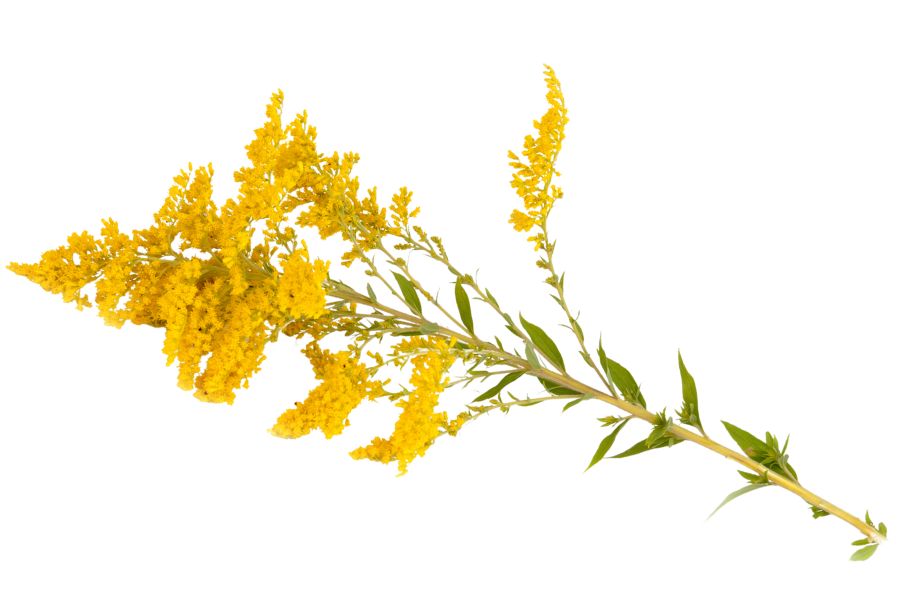Edible plants in Maryland include everything from leafy greens to fruits and roots. Groundnut, for instance, offers starchy underground tubers, while spicebush berries can be dried and ground as a seasoning. These native options have supported foragers for hundreds of years.
Henbit and wild onion are two common plants with entirely different flavors and uses. Some wild greens are best enjoyed young and tender, while others develop their flavor later in the season. Knowing how to identify these differences is part of what makes foraging so rewarding.
Many of Maryland’s wild edible plants go completely unnoticed by people walking right past them. There are dozens more, each with unique features and uses that only become apparent once you’ve spent time learning what they are.
What We Cover In This Article:
- The Edible Plants Found in the State
- Toxic Plants That Look Like Edible Plants
- How to Get the Best Results Foraging
- Where to Find Forageables in the State
- Peak Foraging Seasons
- The extensive local experience and understanding of our team
- Input from multiple local foragers and foraging groups
- The accessibility of the various locations
- Safety and potential hazards when collecting
- Private and public locations
- A desire to include locations for both experienced foragers and those who are just starting out
Using these weights we think we’ve put together the best list out there for just about any forager to be successful!
A Quick Reminder
Before we get into the specifics about where and how to find these plants and mushrooms, we want to be clear that before ingesting any wild plant or mushroom, it should be identified with 100% certainty as edible by someone qualified and experienced in mushroom and plant identification, such as a professional mycologist or an expert forager. Misidentification can lead to serious illness or death.
All plants and mushrooms have the potential to cause severe adverse reactions in certain individuals, even death. If you are consuming wild foragables, it is crucial to cook them thoroughly and properly and only eat a small portion to test for personal tolerance. Some people may have allergies or sensitivities to specific mushrooms and plants, even if they are considered safe for others.
The information provided in this article is for general informational and educational purposes only. Foraging involves inherent risks.
The Edible Plants Found in the State
Wild plants found across the state can add fresh, seasonal ingredients to your meals:
Mountain Mint (Pycnanthemum virginianum)
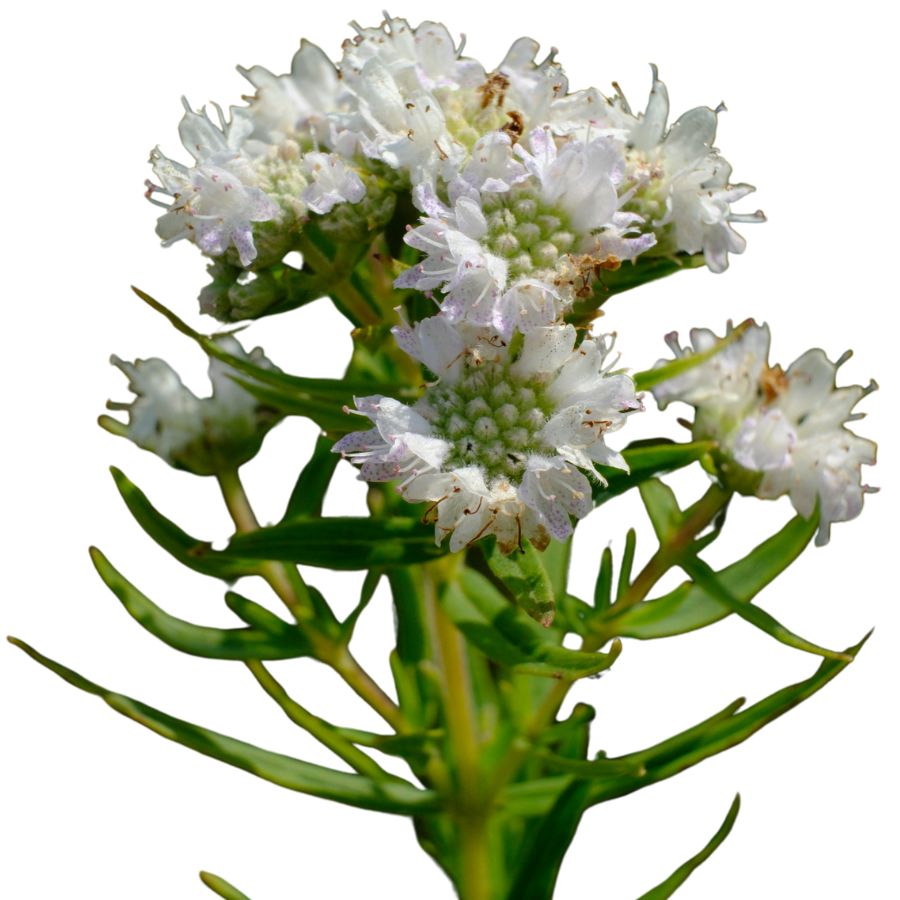
If you come across a strong herbal scent while brushing through wild grass, there’s a good chance mountain mint is nearby. This edible plant has thin, toothed leaves arranged oppositely on stiff square stems, and the leaves are what you’ll want to harvest.
It has a biting mint flavor with slightly earthy tones that works well in teas, savory marinades, or even mixed into ground meats for a fresh kick. The plant resembles a few other wild mints, but unlike potentially toxic lookalikes, mountain mint doesn’t have a dense, oily sheen or fuzzy undersides.
Drying the leaves intensifies the minty character, which can be used long after harvest in spice blends or herbal vinegars. You don’t need much—its taste carries through in even small pinches.
Always crush the leaf between your fingers and give it a sniff to confirm before using, especially if you’re in an area with multiple wild mint species. While it’s safe in moderation, consuming large amounts might leave you with an upset stomach or dry mouth.
Mulberry (Morus rubra)
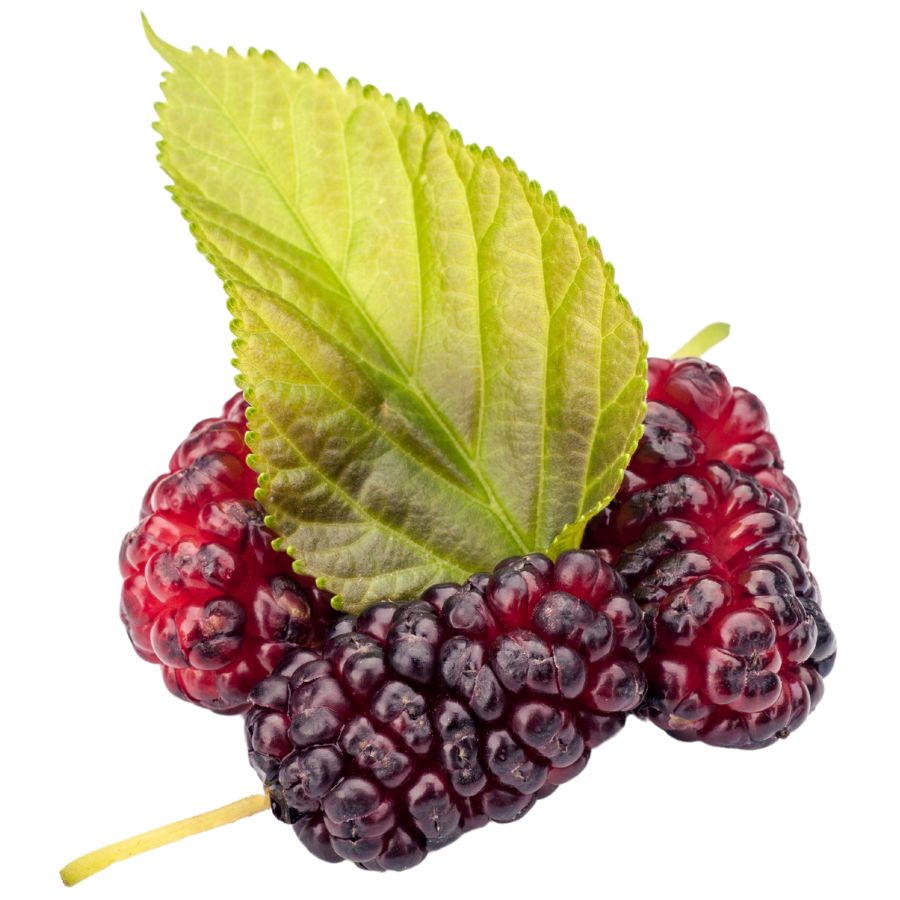
Sweet, juicy, and often overlooked, mulberries are one of the easiest wild berries to recognize. Known by names like white mulberry and red mulberry, these trees produce small, blackberry-like fruits that range from pale pink to deep purple.
The berries have a soft, almost melting texture with a mild tartness behind the sugar. You can eat them fresh by the handful, bake them into pies, or simmer them down into homemade jams and syrups.
While the fruits are safe and delicious when ripe, you should avoid eating the unripe berries or any part of the tree’s sap, which can cause stomach upset. It is also worth knowing that mulberries are delicate and bruise easily when picked, so handle them gently.
Red osier dogwood and some honeysuckles can produce berries that look similar from a distance, but true mulberries grow singly or in loose clusters along the branches and have a distinctive leaf shape that sets them apart. Always double-check the leaf texture and berry arrangement before eating any wild fruits.
Chickweed (Stellaria media)
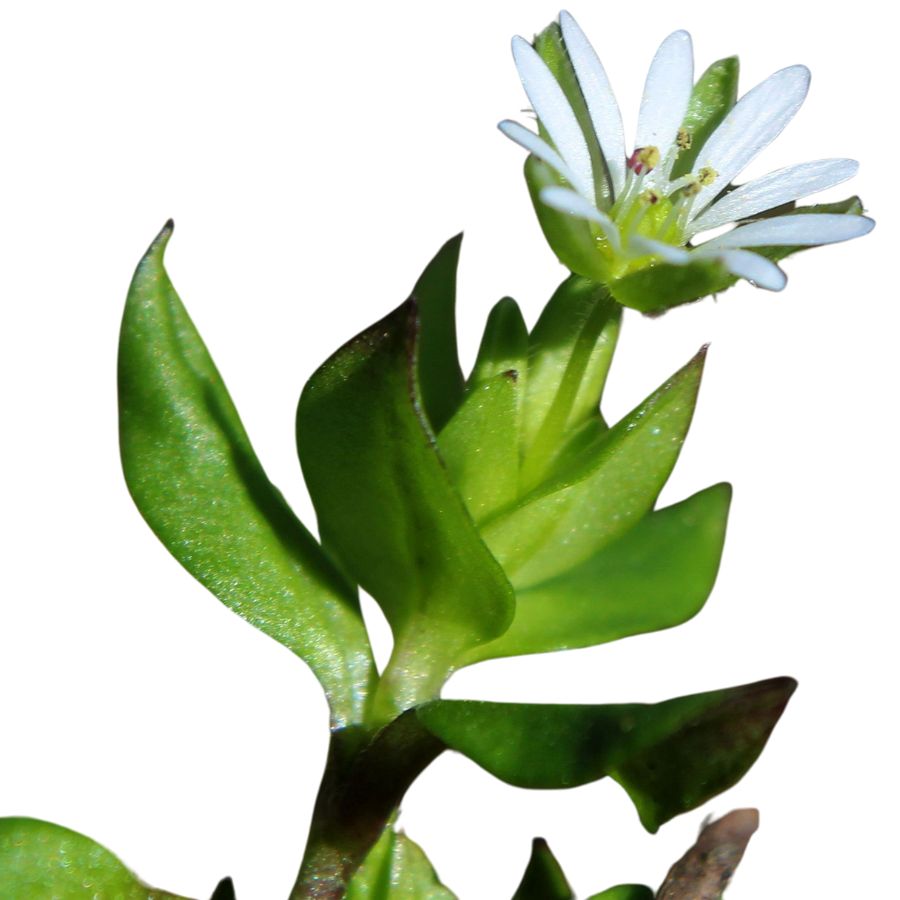
Chickweed, sometimes called satin flower or starweed, is a small, low-growing plant with delicate white star-shaped flowers and bright green leaves. The leaves are oval, pointed at the tip, and often grow in pairs along a slender, somewhat weak-looking stem.
When gathering chickweed, watch out for lookalikes like scarlet pimpernel, which has similar leaves but orange flowers instead of white. A key detail to check is the fine line of hairs that runs along one side of chickweed’s stem, a feature the dangerous lookalikes do not have.
The young leaves, tender stems, and flowers of chickweed are all edible, offering a mild, slightly grassy flavor with a crisp texture. You can toss it fresh into salads, blend it into pestos, or lightly wilt it into soups and stir-fries for a fresh green boost.
Aside from being a food plant, chickweed has been used traditionally in poultices and salves to help soothe skin irritations. Always make sure the plant is positively identified before eating, since mistaking it for a toxic lookalike could cause serious issues.
Groundnut (Apios americana)

Groundnut is also called potato bean or Indian potato, and it grows as a climbing vine with clusters of pinkish-purple flowers. The part most people go for is the underground tuber, which looks a bit like a small, knobby chain of beads.
The flavor is richer than a regular potato, with a nutty, earthy taste and a dense, almost chestnut-like texture when cooked. It holds up well in soups and stews, or you can boil and mash it like a root vegetable.
Some people slice it thin and roast it until crisp, while others slow-cook it to bring out a sweeter taste. The vine also produces beans, but the root is what’s usually eaten.
There are a few vines that resemble groundnut, but many of those don’t have the same distinctive flower clusters or tend to lack the beadlike roots. Always make sure you’re digging up the right plant before cooking it.
Dandelion (Taraxacum officinale)
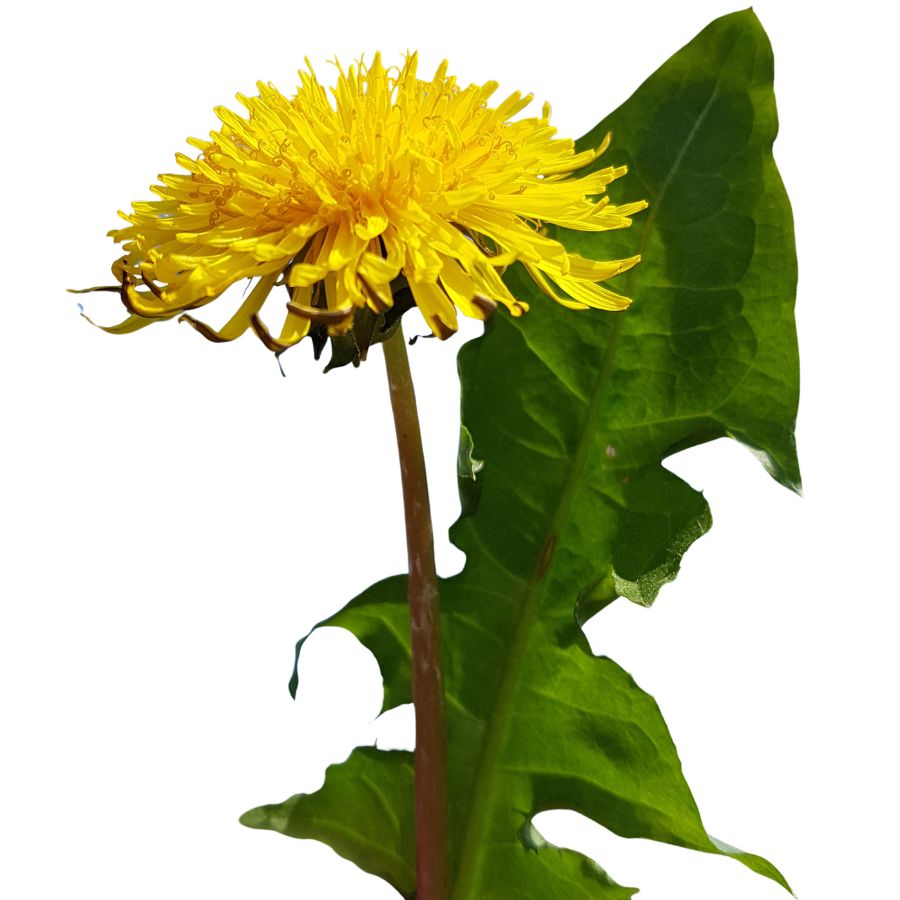
Bright yellow flowers and jagged, deeply toothed leaves make dandelions easy to spot in open fields, lawns, and roadsides. You might also hear them called lion’s tooth, blowball, or puffball once the flowers turn into round, white seed heads.
Every part of the dandelion is edible, but you will want to avoid harvesting from places treated with pesticides or roadside areas with heavy car traffic. Besides being a food source, dandelions have been used traditionally for simple herbal remedies and natural dye projects.
Young dandelion leaves have a slightly bitter, peppery flavor that works well in salads or sautés, and the flowers can be fried into fritters or brewed into tea. Some people even roast the roots to make a coffee substitute with a rich, earthy taste.
One thing to watch out for is cat’s ear, a common lookalike with hairy leaves and branching flower stems instead of a single, hollow one. To make sure you have a true dandelion, check for a smooth, hairless stem that oozes a milky sap when broken.
Easter Redbud (Cercis canadensis)
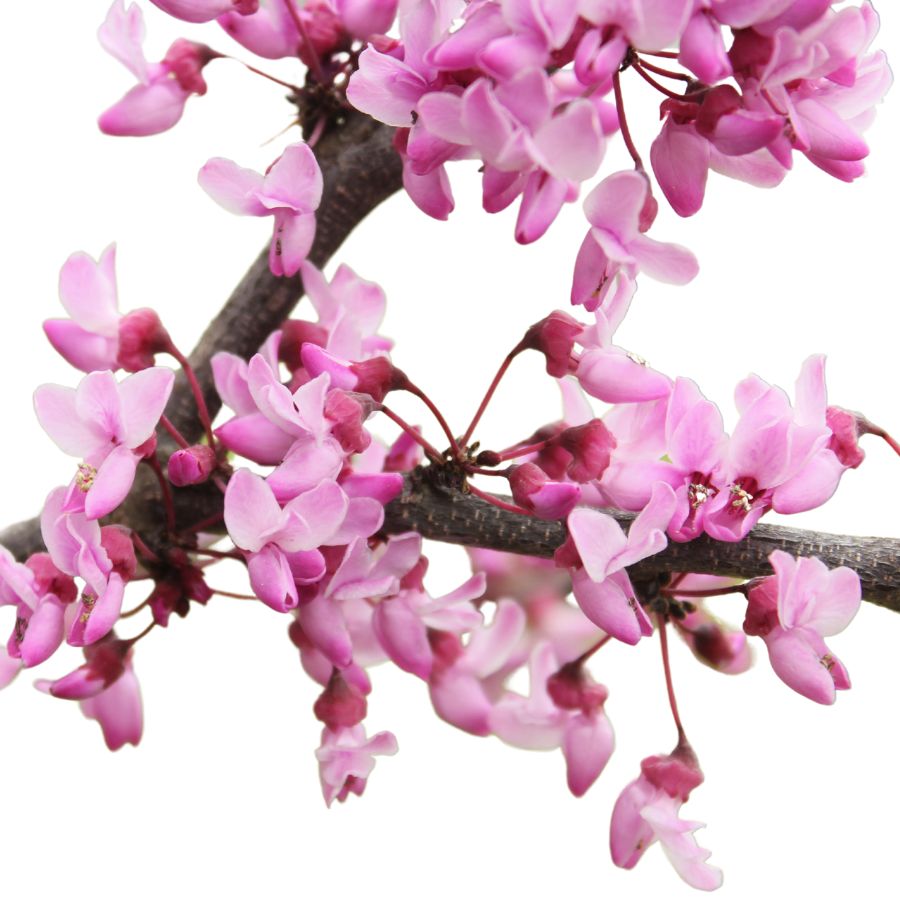
The small, pinkish-purple flowers of the eastern redbud grow directly from the branches and even the trunk. These blooms are edible raw and have a slightly tangy, pea-like flavor that works well in salads or as a garnish.
You can also eat the young seed pods when they’re still flat and tender. They taste somewhat like snow peas and can be lightly steamed, stir-fried, or pickled.
Avoid older seed pods, which become tough and fibrous. Also be aware that while the flowers and young pods are safe to eat, the mature seeds and bark are not consumed.
Some people sprinkle the blossoms into baked goods for a splash of color and a mild floral note. Others like to candy the flowers, though they lose some of their fresh bite in the process.
Wild Onion (Allium canadense)
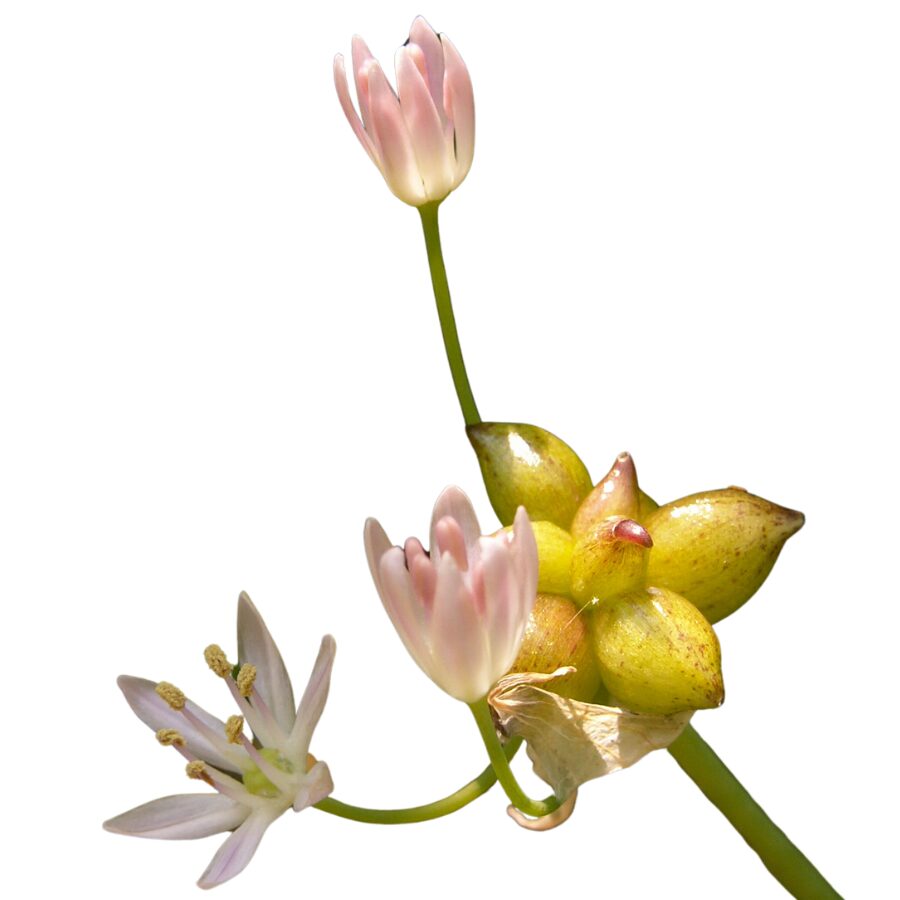
Meadow garlic, also called wild onion or wild garlic, grows in clumps with slender hollow leaves and small pink or white flowers. You’ll recognize it by the onion scent released when you bruise the stems or dig into the bulb.
The edible parts include the bulbs, stems, leaves, and flowers, all of which have a mild onion flavor and crisp texture. Cook them as you would scallions—sautéed, grilled, or tossed raw into salads.
False garlic, or crow poison, looks similar but lacks the onion smell and can be toxic if eaten. Always crush the plant before harvesting—no onion scent means don’t eat it.
Many people pickle the bulbs or chop the greens for compound butters and dips. Be cautious where you forage it though, as plants growing near roadsides or sprayed areas can absorb contaminants.
Jerusalem Artichoke (Helianthus tuberosus)
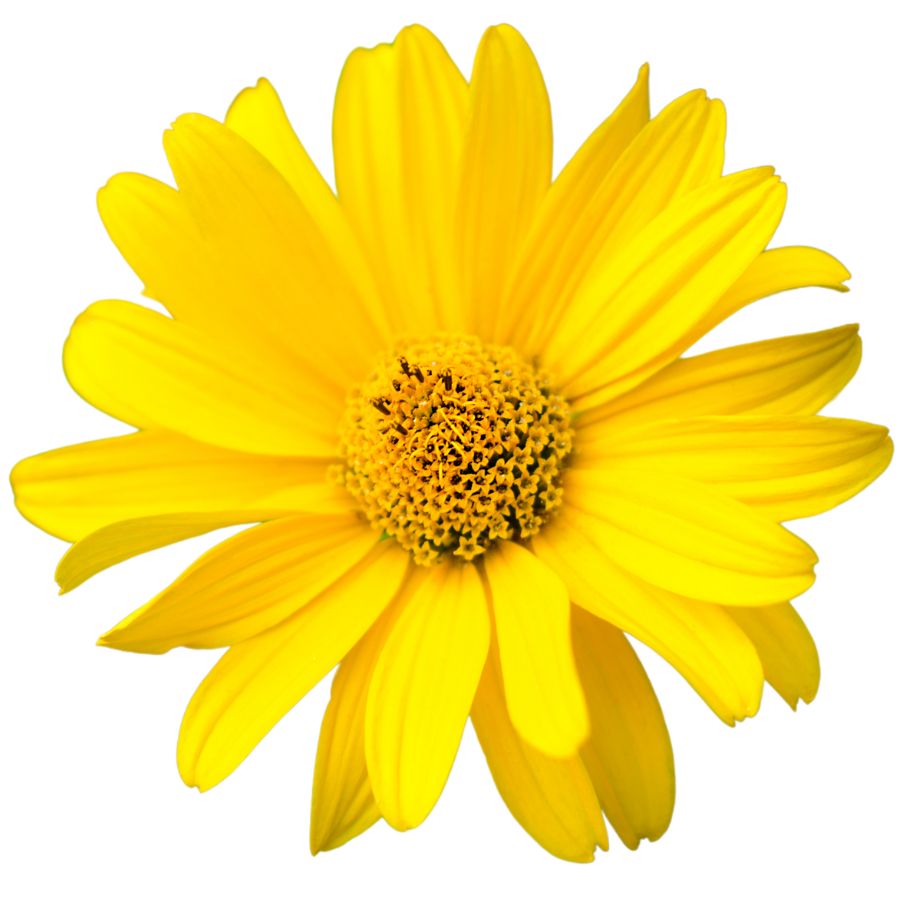
Jerusalem artichoke grows tall with sunflower-like blooms and has knobby underground tubers. The tubers are tan or reddish and look a bit like ginger root, though they belong to the sunflower family.
The part you’re after is the tuber, which has a nutty, slightly sweet flavor and a crisp texture when raw. You can roast, sauté, boil, or mash them like potatoes, and they hold their shape well in soups and stir-fries.
Some people experience gas or bloating after eating sunchokes due to the inulin they contain, so it’s a good idea to try a small amount first. Cooking them thoroughly can help reduce the chances of digestive discomfort.
Sunchokes don’t have many dangerous lookalikes, but it’s important not to confuse the plant with other sunflower relatives that don’t produce tubers. The above-ground part resembles a small sunflower, but it’s the knotted, underground tubers that are worth digging up.
Elderberry (Sambucus canadensis)
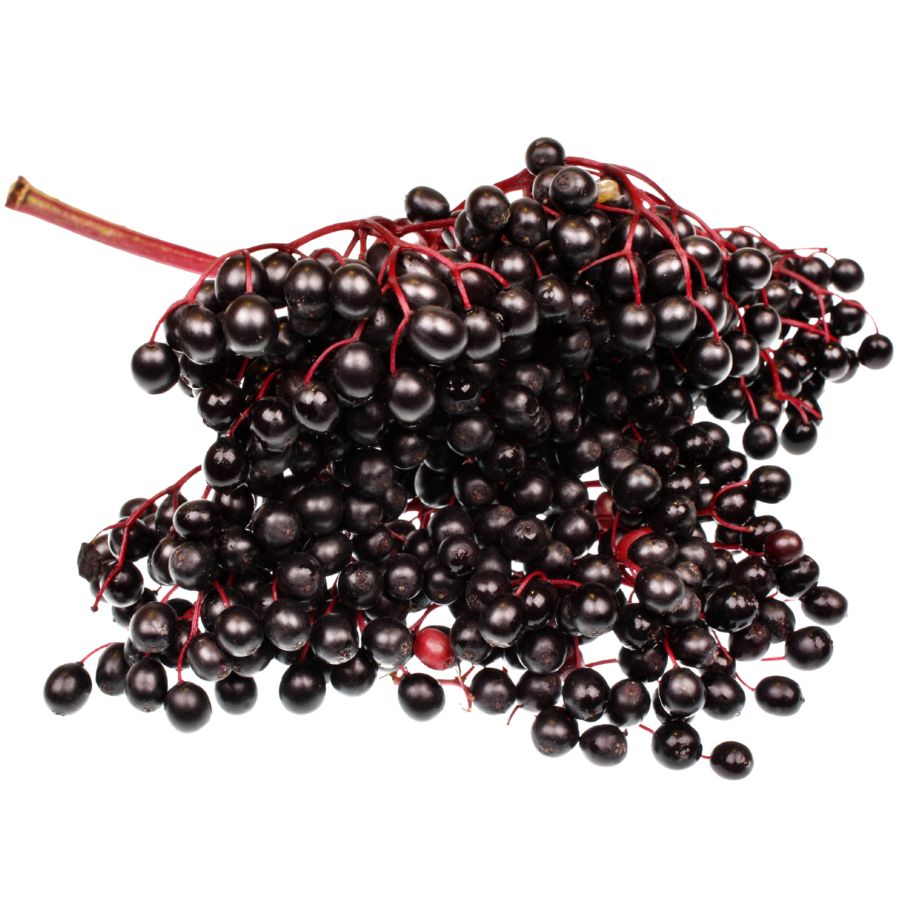
Elderberry is often called American elder, common elder, or sweet elder. It grows as a large, shrubby plant with clusters of tiny white flowers that eventually turn into deep purple to black berries.
You can recognize elderberry by its compound leaves with five to eleven serrated leaflets and its flat-topped flower clusters. One important thing to watch out for is its toxic lookalikes, like pokeweed, which has very different smooth-edged leaves and reddish stems.
The ripe berries have a tart, almost earthy flavor and a soft texture when cooked. People usually cook elderberries into syrups, jams, pies, or wine because eating raw berries can cause nausea.
Only the ripe, cooked berries and flowers are edible, while the leaves, stems, and unripe berries are toxic. Always take care to strip the berries cleanly from their stems before using them, as even small bits of stem can cause problems.
Blackberry (Rubus allegheniensis)
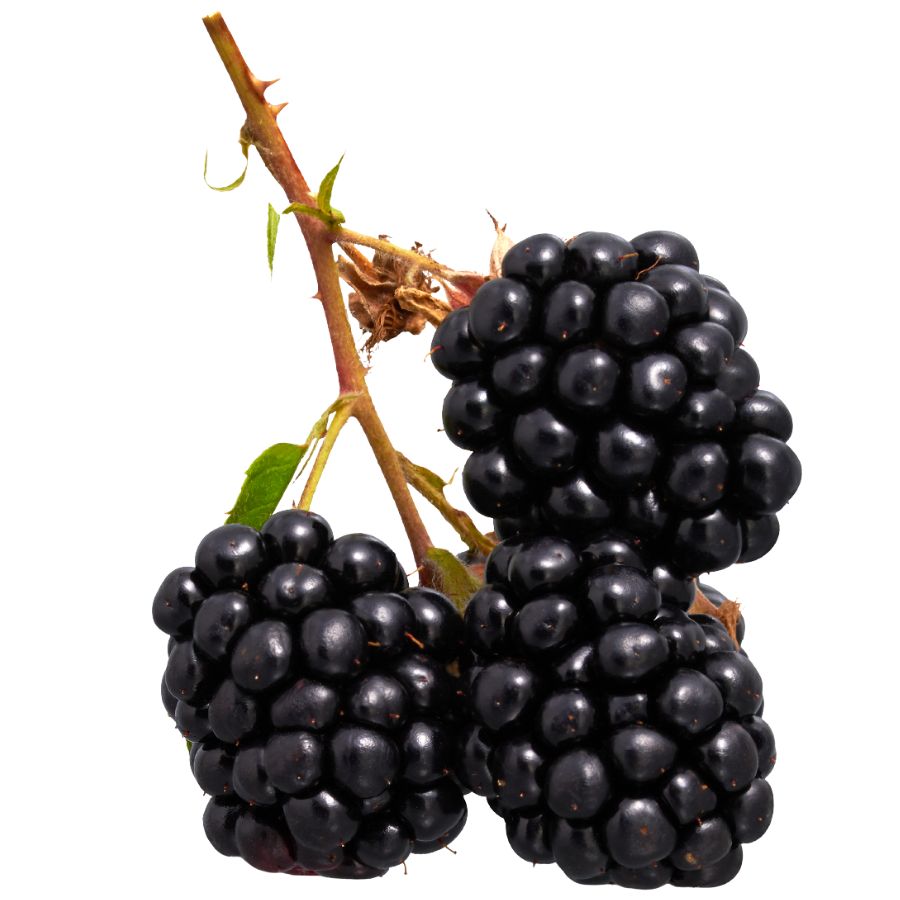
Blackberry, also known as brambleberry or dewberry, grows on thick, thorny canes that can arch and spread across the ground. The leaves are usually serrated, and the fruit ripens from green to red before turning deep purple or black when fully ready to pick.
The berries have a sweet, tangy flavor with a soft, juicy texture that easily bursts in your mouth. You can eat them raw, bake them into pies and cobblers, or preserve them by making jams and jellies.
Only the ripe fruit of the blackberry plant is edible, while the stems and leaves are not usually eaten.
Some plants like black raspberry can look similar, but black raspberries are hollow in the center when picked while blackberries have a solid core. It’s important to avoid confusing blackberries with nightshade berries, which grow on upright plants without thorny vines and can be toxic.
An interesting thing about blackberries is that they are technically not a single berry but a cluster of small drupelets packed together.
Milkweed (Asclepias syriaca)
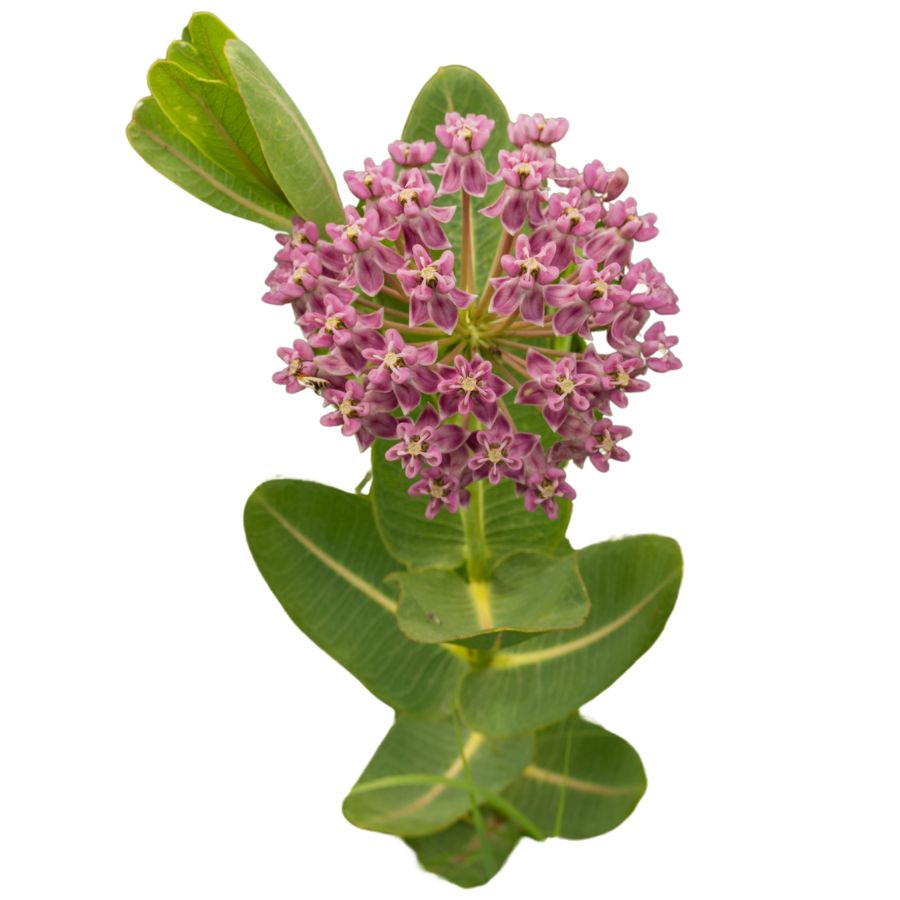
Known for its thick stems, broad leaves, and clusters of pinkish-purple flowers, common milkweed is sometimes called silkweed or butterfly flower. When you snap a stem or leaf, it releases a milky sap that helps you tell it apart from other plants that can be harmful.
If you want to try it in the kitchen, focus on gathering the young shoots, the tightly closed flower buds, and the small, immature pods. These parts have a mild, slightly sweet flavor when cooked, and their soft texture makes them a good addition to soups, sautés, and fritters.
Getting it ready to eat takes a little care, since boiling the plant parts in several changes of water helps remove bitterness and unwanted compounds. Some people also like to steam the buds or fry the pods lightly to bring out their best taste.
Although monarch caterpillars rely on this plant for survival, it has a long history of being used by people as well. Watch out for lookalikes like dogbane, though, since they share the same milky sap but are dangerously toxic if eaten.
Goldenrod (Solidago spp.)
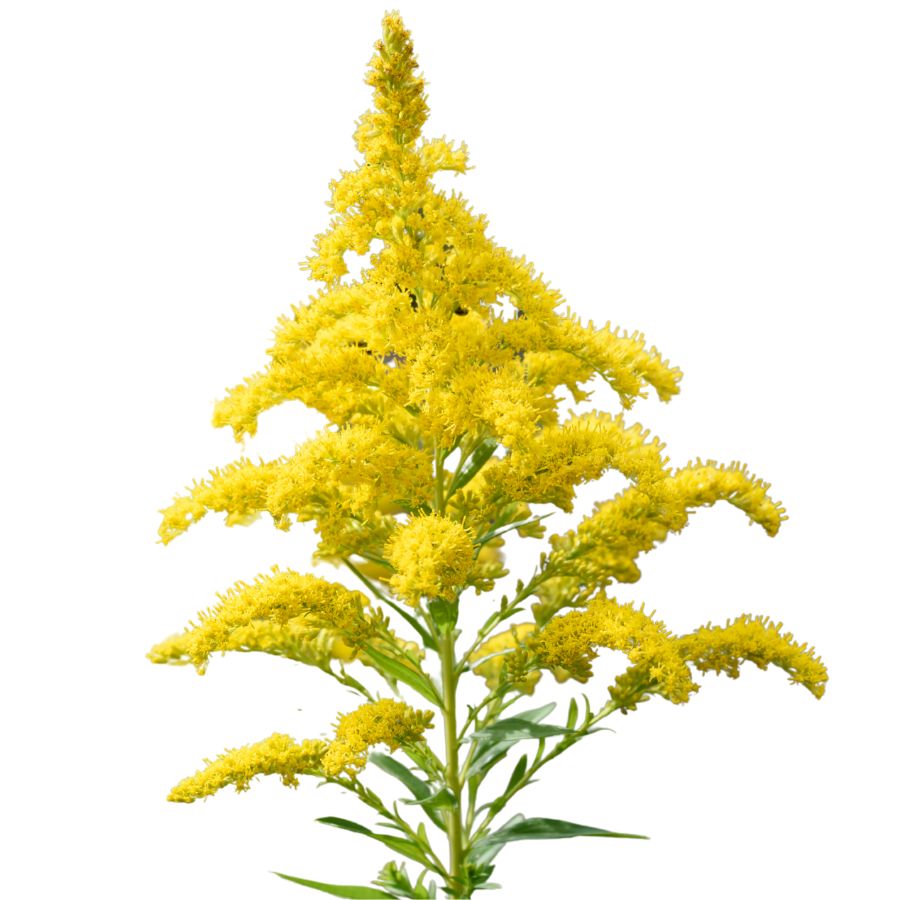
Goldenrod has tall, unbranched stems topped with golden flower sprays that you can dry or steep into tea. The taste is bold and slightly astringent, often balanced with lemon or mint in homemade brews.
Don’t mistake it for ragweed, which causes allergies and has inconspicuous green flowers instead. Goldenrod’s edible parts include the flowers and younger leaves, though the leaves are better when fresh.
Try candying the blossoms or using them as a garnish—they hold their color and shape surprisingly well. The flowers can be sticky with pollen, so rinse them gently if you’re using them fresh.
Goldenrod can cause reactions in people sensitive to other members of the aster family, so test it carefully if you’re unsure. Some people also notice a mild laxative effect if they consume too much at once.
Spicebush (Lindera benzoin)
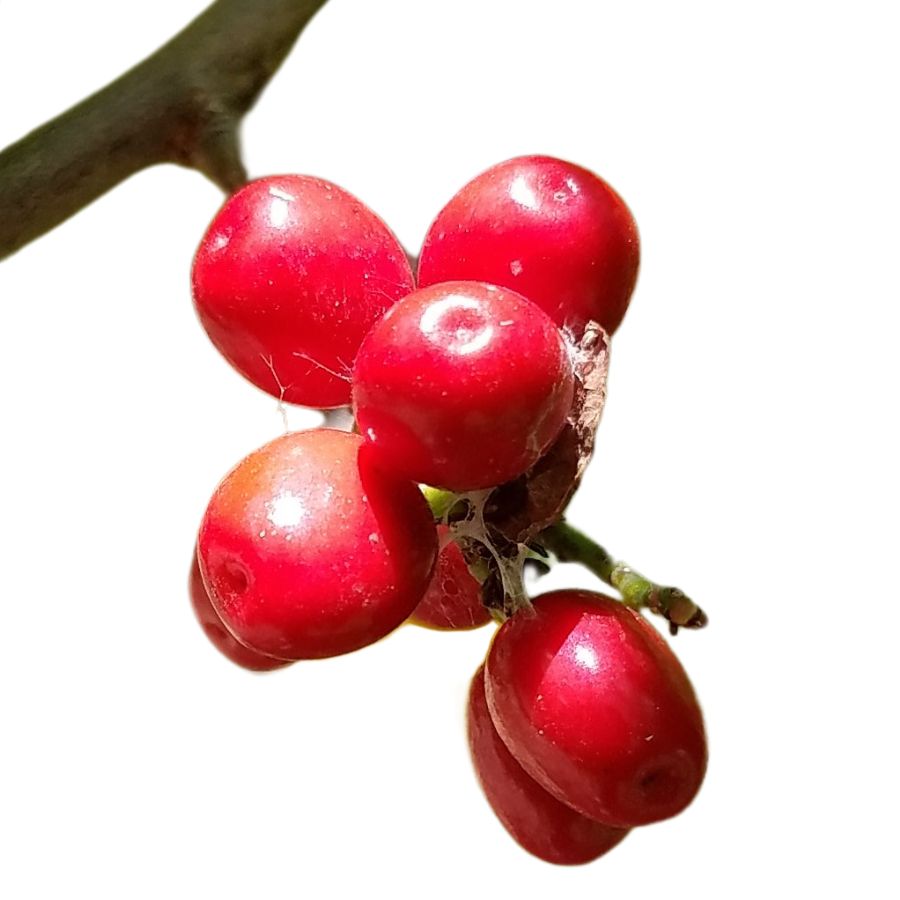
Spicebush has smooth-edged leaves that release a spicy citrus scent when crushed, and it produces clusters of red berries that grow close to the stem. Those berries, along with the young twigs and leaves, are all edible and flavorful.
The berries are especially valued for their warm, peppery kick and are often dried and ground as a seasoning. You can steep the leaves and twigs into tea or simmer them into broths.
Avoid confusing it with lookalikes like Carolina allspice, which has larger, thicker leaves and lacks the same aromatic quality. Its berries also differ in size and internal seed structure.
Spicebush has a long history of use in traditional cooking for its mild numbing effect and warming flavor. Only the berries, leaves, and tender twigs should be consumed—avoid the bark and roots.
American Persimmon (Diospyros virginiana)
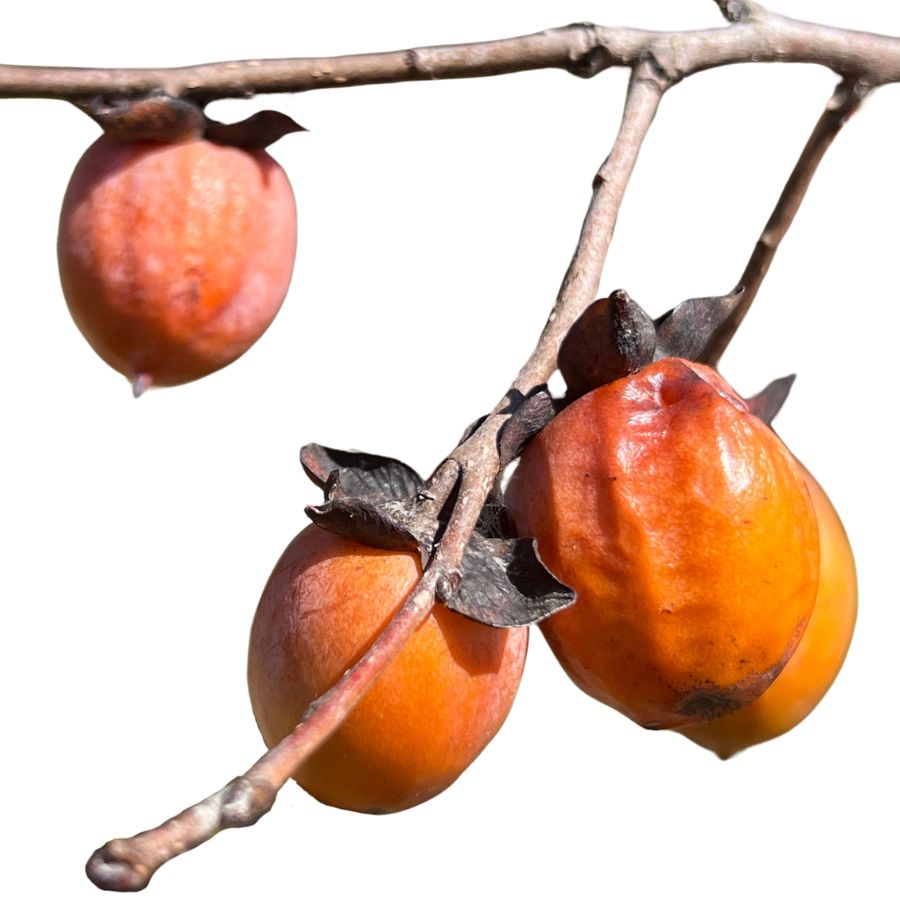
Persimmon, sometimes called American persimmon or common persimmon, grows as a small tree with rough, blocky bark and oval-shaped leaves. The fruit looks like a small, flattened tomato and turns a deep orange or reddish color when ripe.
If you bite into an unripe persimmon, you will quickly notice an extremely astringent, mouth-drying effect. A ripe persimmon, on the other hand, tastes sweet, rich, and custard-like, with a soft and jelly-like texture inside.
You can eat persimmons fresh once they are fully ripe, or you can cook them down into puddings, jams, and baked goods. Some people also mash and freeze the pulp to use later for pies, breads, and sauces.
Wild persimmons can sometimes be confused with black nightshade berries, but nightshade fruits are much smaller, grow in clusters, and stay dark purple or black. Only the ripe fruit of the persimmon tree should be eaten; the seeds and the unripe fruit are not edible.
Henbit (Lamium amplexicaule)
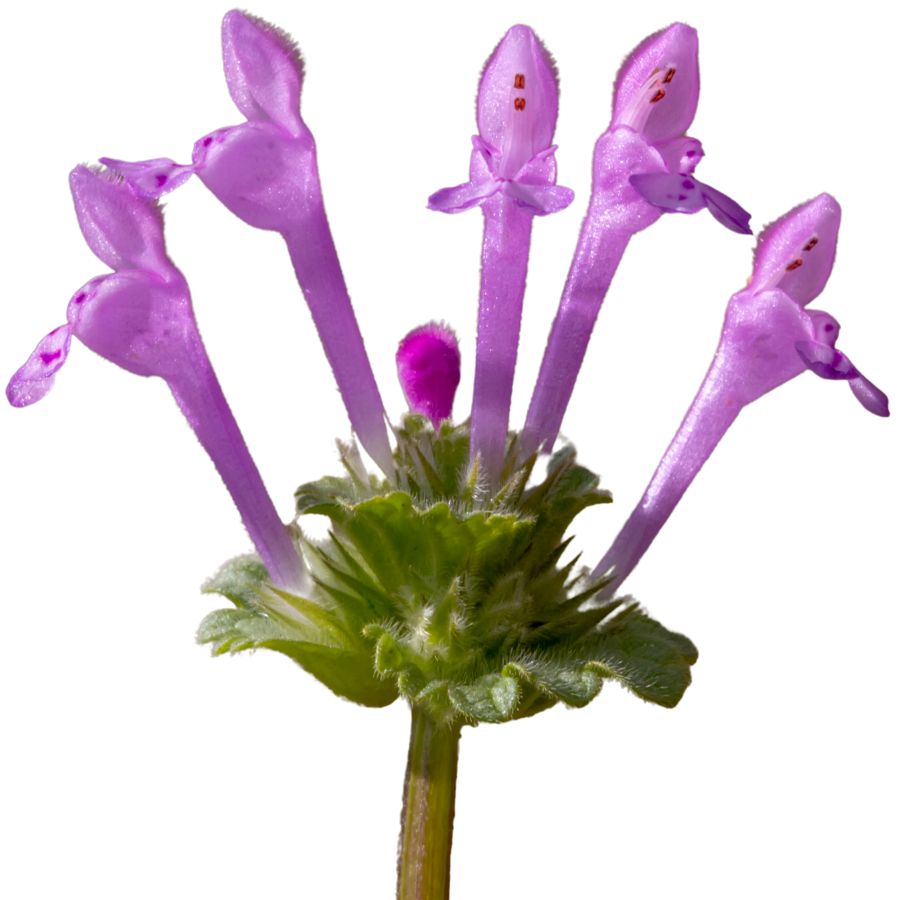
Henbit, which is also known as giraffe head or henbit deadnettle, is a small plant with fuzzy, scalloped leaves and tiny pink-purple flowers. You can spot it easily by the way its square stems branch low to the ground while the leaves crowd around the stem in neat whorls.
The stems, leaves, and flowers are all edible and can be eaten raw or cooked. They have a mild, slightly sweet flavor with a soft texture that works well in salads, smoothies, or lightly sautéed dishes.
Henbit is often added fresh to salads or used as a tender green in soups and stir-fries. There is no need to cook it for long because it wilts quickly and can lose its flavor if overcooked.
It’s important to remember that henbit can look similar to purple deadnettle, but henbit’s leaves are more rounded and clasp the stem directly without long stalks. Another lookalike is ground ivy, which has a stronger smell and a creeping growth habit that henbit does not.
Pawpaw (Asimina triloba)
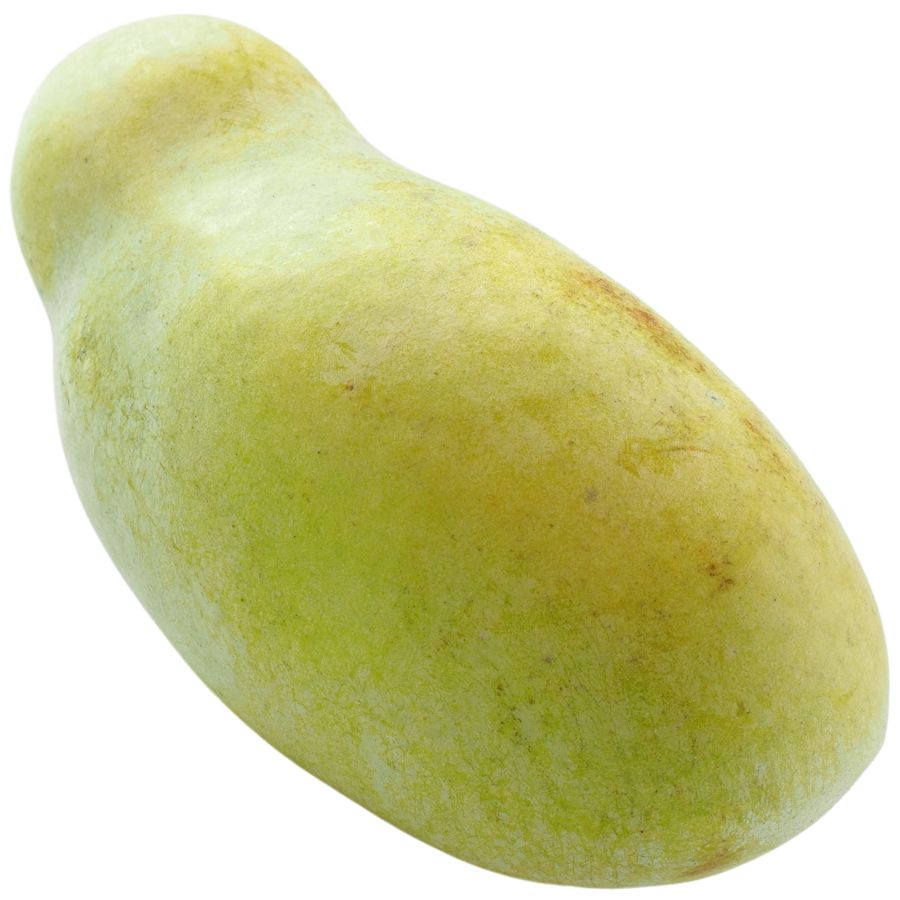
The pawpaw grows fruits that are green and shaped a little like small mangoes. Inside, the soft yellow flesh tastes like a blend of banana, mango, and melon, with a custard-like texture that melts in your mouth.
If you are comparing it to similar plants, keep in mind that young pawpaw trees can look a little like young magnolias because of their large leaves. True pawpaws grow fruits with large brown seeds tucked inside, while magnolias do not produce anything that looks or tastes similar.
You can eat the flesh straight out of the skin with a spoon, or mash it into puddings, smoothies, and even homemade ice cream. Some people also like to freeze it into cubes for later, although it does tend to brown quickly once exposed to air.
Stick to eating the soft inner flesh. Make sure not to ingest the skin and seeds of the fruit because they contain compounds that can upset your stomach.
This fruit is that it was a favorite snack of Native Americans and early explorers long before it started showing up in backyard gardens.
Cattail (Typha latifolia)
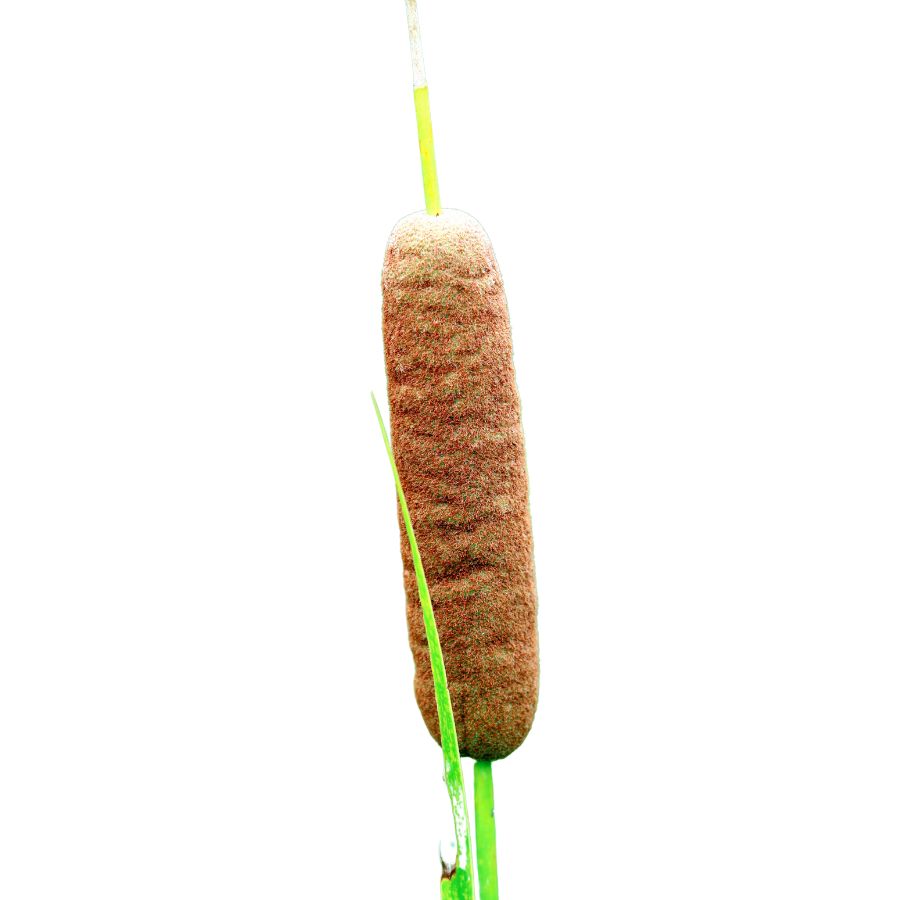
Cattails, often called bulrushes or corn dog grass, are easy to spot with their tall green stalks and brown, sausage-shaped flower heads. They grow thickly along the edges of ponds, lakes, and marshes, forming dense stands that are hard to miss.
Almost every part of the cattail is edible, including the young shoots, flower heads, and starchy rhizomes. You can eat the tender shoots raw, boil the flower heads like corn on the cob, or grind the rhizomes into flour for baking.
Besides food, cattails have long been used for making mats, baskets, and even insulation by weaving the dried leaves and using the fluffy seeds. Their combination of usefulness and abundance has made them an important survival plant for many cultures.
One thing you need to watch for is young cattail shoots being confused with similar-looking plants like iris, which are toxic. A real cattail shoot will have a mild cucumber-like smell when you snap it open, while iris plants smell bitter or unpleasant.
Beech (Fagus grandifolia)
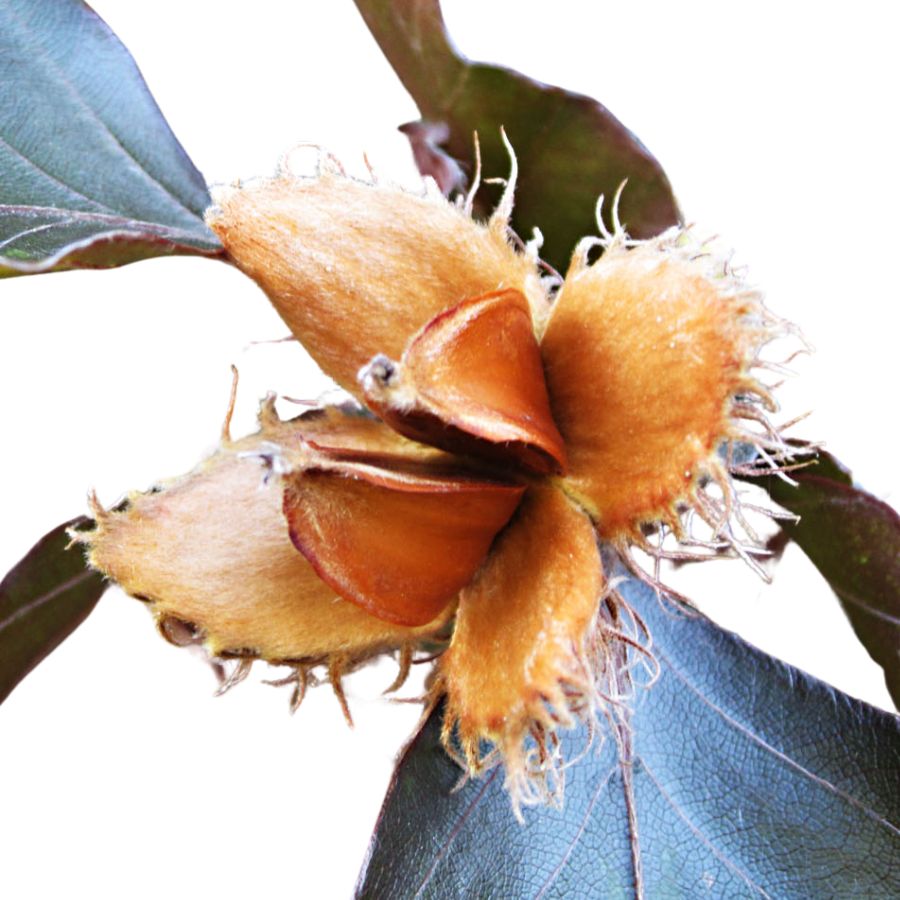
From the American beech tree—also nicknamed white beech—you can collect small, three-sided nuts that are tightly enclosed in a spiny outer husk. They’re best roasted or pan-dried to bring out their buttery texture and mellow flavor.
The husks naturally open on their own once the nuts are ready, and you’ll often find two shiny brown seeds inside. Don’t eat them raw in large amounts, since they contain small amounts of oxalic acid that cooking neutralizes.
Beech trees are easy to confuse with chestnut trees at a glance, but chestnut leaves have longer tapering tips and the husks are far more heavily armored with spines. Avoid picking from horse chestnut, which has poisonous seeds that look similar.
Once prepared, the nuts can be added to soups or ground into a coarse flour for baked goods. Nothing else from the tree is eaten—only the seeds inside the husks are used.
Curly Dock (Rumex crispus)
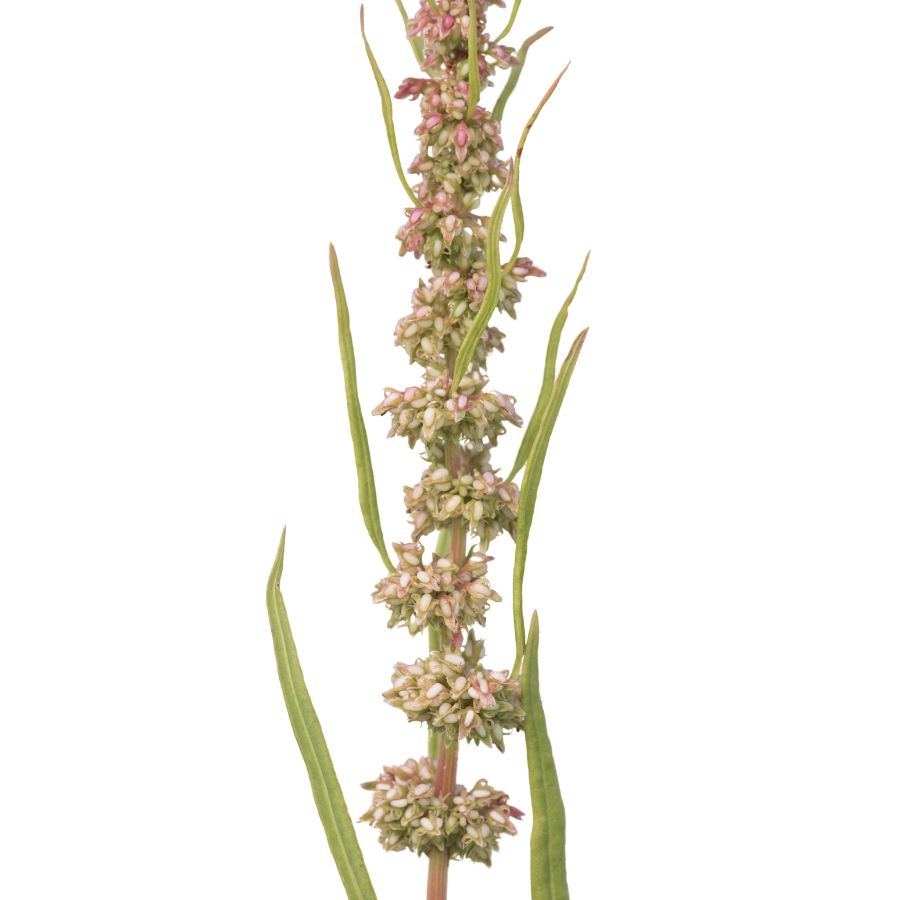
Curly dock, sometimes called yellow dock, is easy to spot once you know what to look for. It has long, wavy-edged leaves that form a rosette at the base, with tall stalks that eventually turn rusty brown as seeds mature.
The young leaves are edible and often cooked to mellow out their sharp, lemony taste, which can be too strong when eaten raw. You can also dry and powder the seeds to use as a flour supplement, although they are tiny and take some effort to prepare.
Curly dock has some lookalikes, like other types of dock and sorrel, but its heavily crinkled leaf edges and thick taproot help it stand out. Be careful not to confuse it with plants like wild rhubarb, which can have toxic parts if misidentified.
Besides being edible, curly dock has a history of being used in homemade remedies for skin irritation. The roots are not eaten raw because they are tough and contain compounds that can upset your stomach if you are not careful.
Lamb’s Quarters (Chenopodium album)
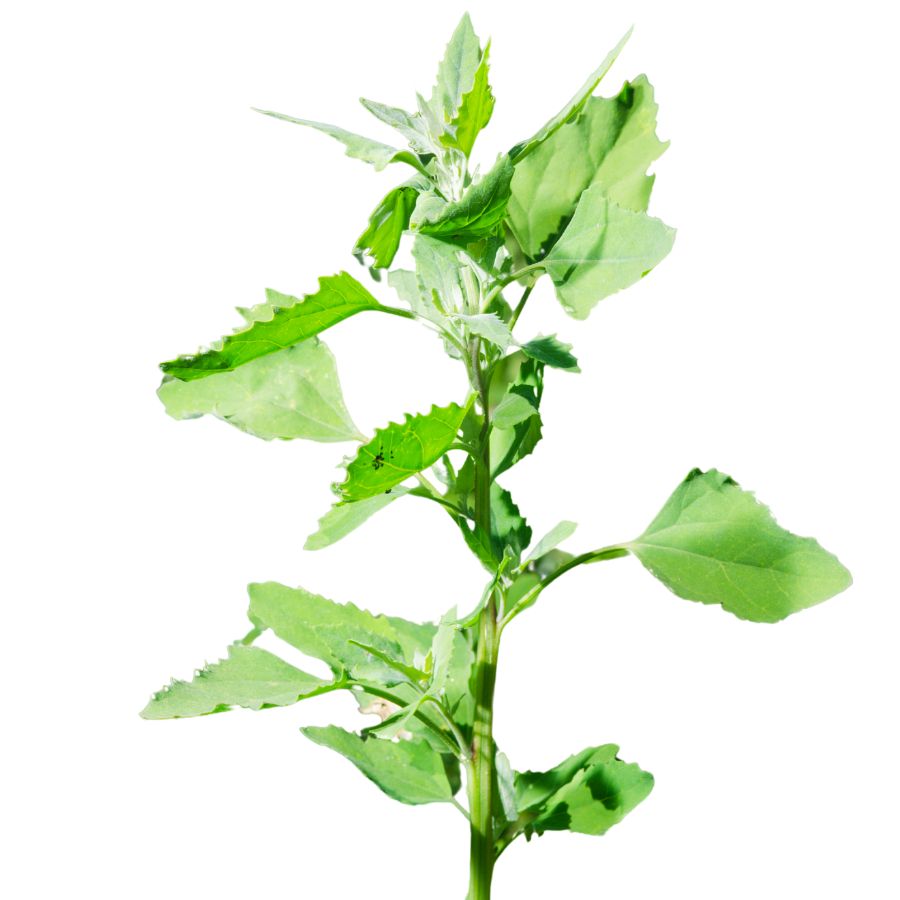
Lamb’s quarters, also called wild spinach and pigweed, has soft green leaves that often look dusted with a white, powdery coating. The leaves are shaped a little like goose feet, with slightly jagged edges and a smooth underside that feels almost velvety when you touch it.
A few plants can be confused with lamb’s quarters, like some types of nightshade, but true lamb’s quarters never have berries and its leaves are usually coated in that distinctive white bloom. Always check that the stems are grooved and not round and smooth like the poisonous lookalikes.
When you taste lamb’s quarters, you will notice it has a mild, slightly nutty flavor that gets richer when cooked. The young leaves, tender stems, and even the seeds are all edible, but you should avoid eating the older stems because they become tough and stringy.
People often sauté lamb’s quarters like spinach, blend it into smoothies, or dry the leaves for later use in soups and stews. It is also rich in oxalates, so you will want to cook it before eating large amounts to avoid any problems.
Toxic Plants That Look Like Edible Plants
There are plenty of wild edibles to choose from, but some toxic native plants closely resemble them. Mistaking the wrong one can lead to severe illness or even death, so it’s important to know exactly what you’re picking.
Poison Hemlock (Conium maculatum)
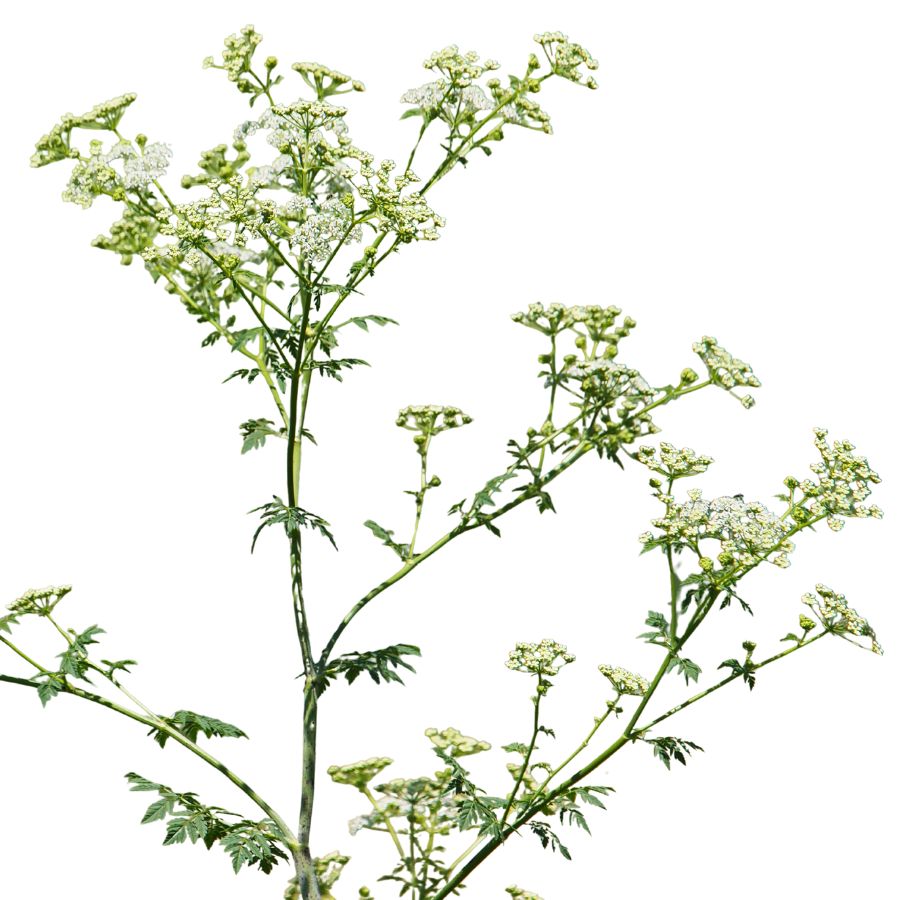
Often mistaken for: Wild carrot (Daucus carota)
Poison hemlock is a tall plant with lacy leaves and umbrella-like clusters of tiny white flowers. It has smooth, hollow stems with purple blotches and grows in sunny places like roadsides, meadows, and stream banks.
Unlike wild carrot, which has hairy stems and a dark central floret, poison hemlock has a musty odor and no flower center spot. It’s extremely toxic; just a small amount can be fatal, and even touching the sap can irritate the skin.
Water Hemlock (Cicuta spp.)
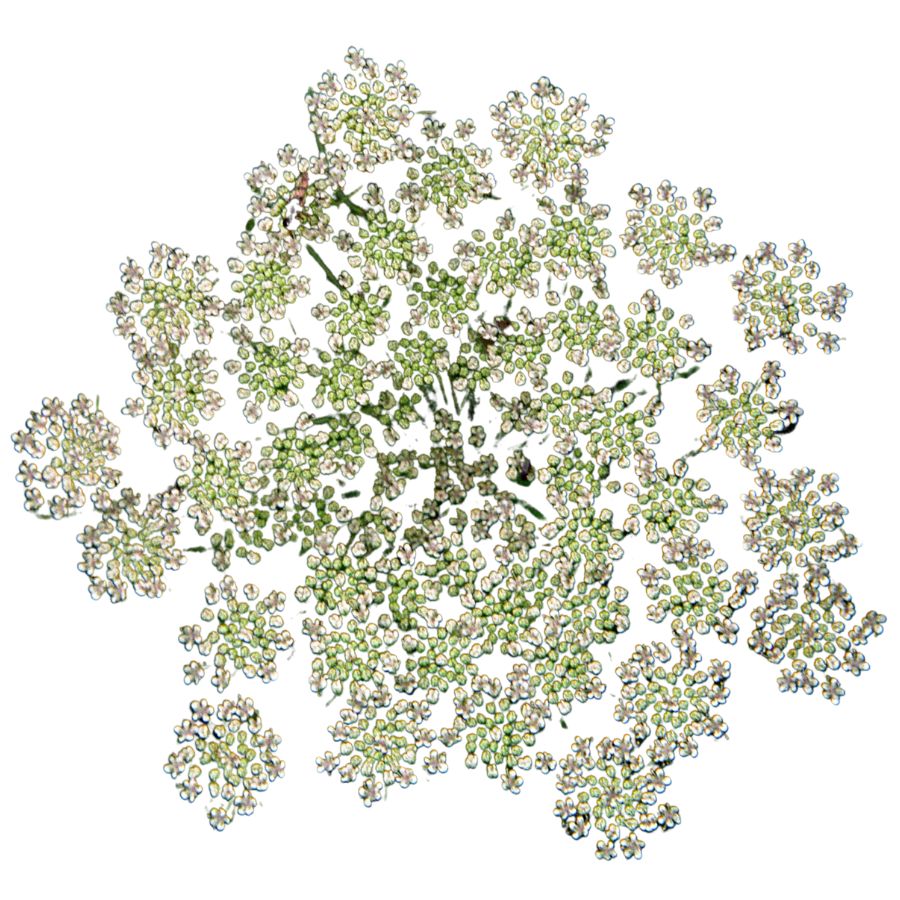
Often mistaken for: Wild parsnip (Pastinaca sativa) or wild celery (Apium spp.)
Water hemlock is a tall, branching plant with umbrella-shaped clusters of small white flowers. It grows in wet places like stream banks, marshes, and ditches, with stems that often show purple streaks or spots.
It can be confused with wild parsnip or wild celery, but its thick, hollow roots have internal chambers and release a yellow, foul-smelling sap when cut. Water hemlock is the most toxic plant in North America, and just a small amount can cause seizures, respiratory failure, and death.
False Hellebore (Veratrum viride)
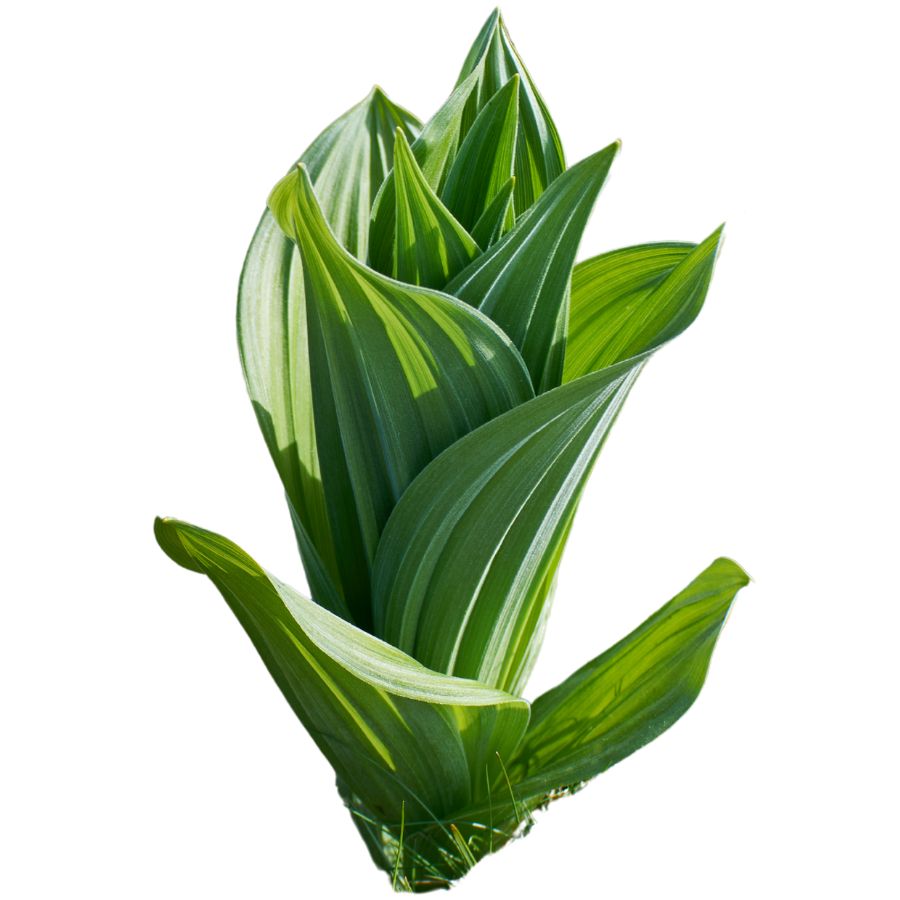
Often mistaken for: Ramps (Allium tricoccum)
False hellebore is a tall plant with broad, pleated green leaves that grow in a spiral from the base, often appearing early in spring. It grows in moist woods, meadows, and along streams.
It’s commonly mistaken for ramps, but ramps have a strong onion or garlic smell, while false hellebore is odorless and later grows a tall flower stalk. The plant is highly toxic, and eating any part can cause nausea, a slowed heart rate, and even death due to its alkaloids that affect the nervous and cardiovascular systems.
Death Camas (Zigadenus spp.)
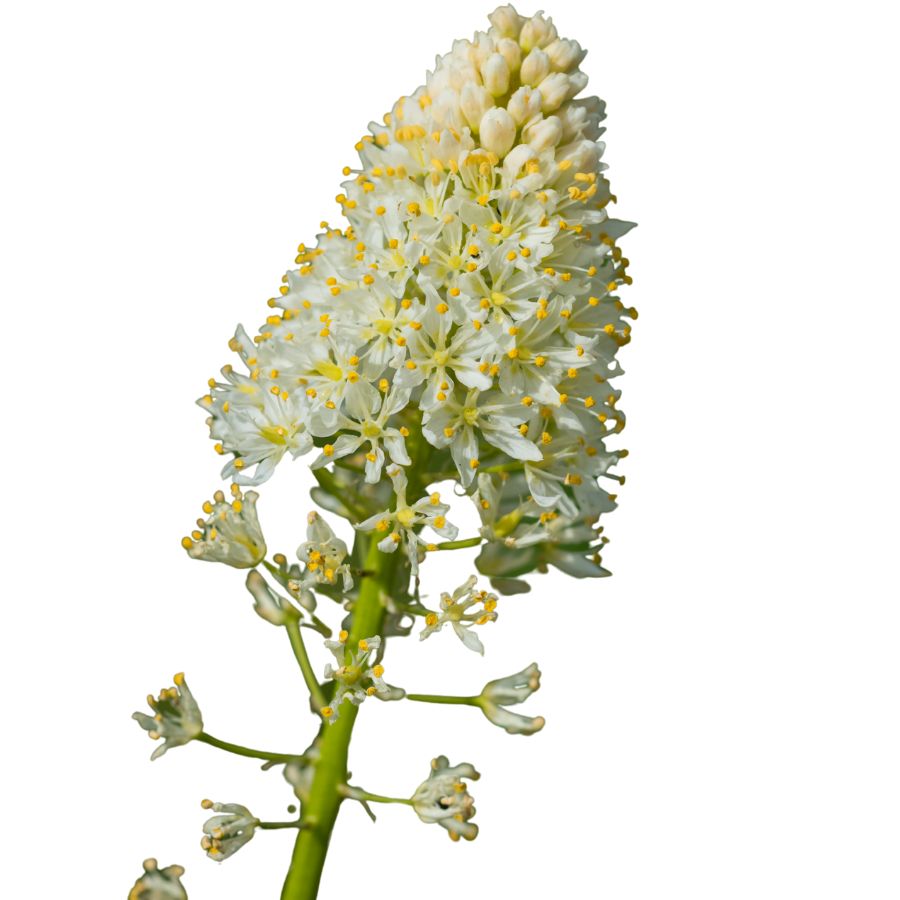
Often mistaken for: Wild onion or wild garlic (Allium spp.)
Death camas is a slender, grass-like plant that grows from underground bulbs and is found in open woods, meadows, and grassy hillsides. It has small, cream-colored flowers in loose clusters atop a tall stalk.
It’s often confused with wild onion or wild garlic due to their similar narrow leaves and habitats, but only Allium plants have a strong onion or garlic scent, while death camas has none. The plant is extremely poisonous, especially the bulbs, and even a small amount can cause nausea, vomiting, a slowed heartbeat, and potentially fatal respiratory failure.
Buckthorn Berries (Rhamnus spp.)
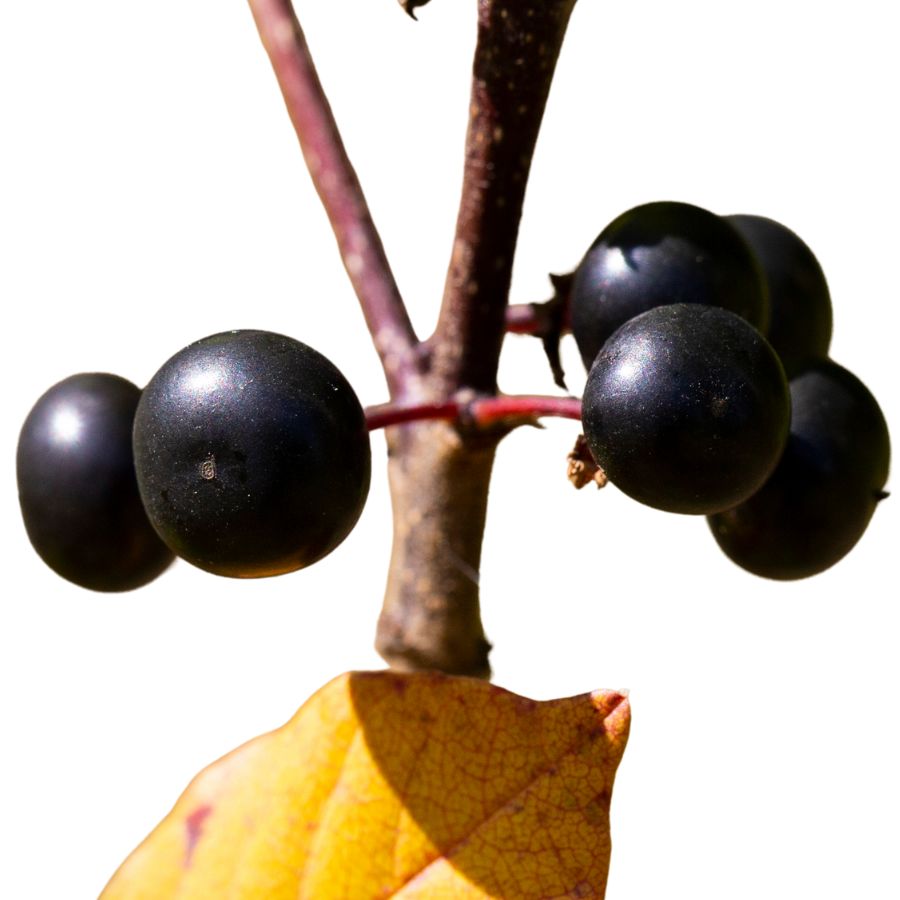
Often mistaken for: Elderberries (Sambucus spp.)
Buckthorn is a shrub or small tree often found along woodland edges, roadsides, and disturbed areas. It produces small, round berries that ripen to dark purple or black and usually grow in loose clusters.
These berries are sometimes mistaken for elderberries and other wild fruits, which also grow in dark clusters, but elderberries form flat-topped clusters on reddish stems while buckthorn berries are more scattered. Buckthorn berries are unsafe to eat as they contain compounds that can cause cramping, vomiting, and diarrhea, and large amounts may lead to dehydration and serious digestive problems.
Mayapple (Podophyllum peltatum)
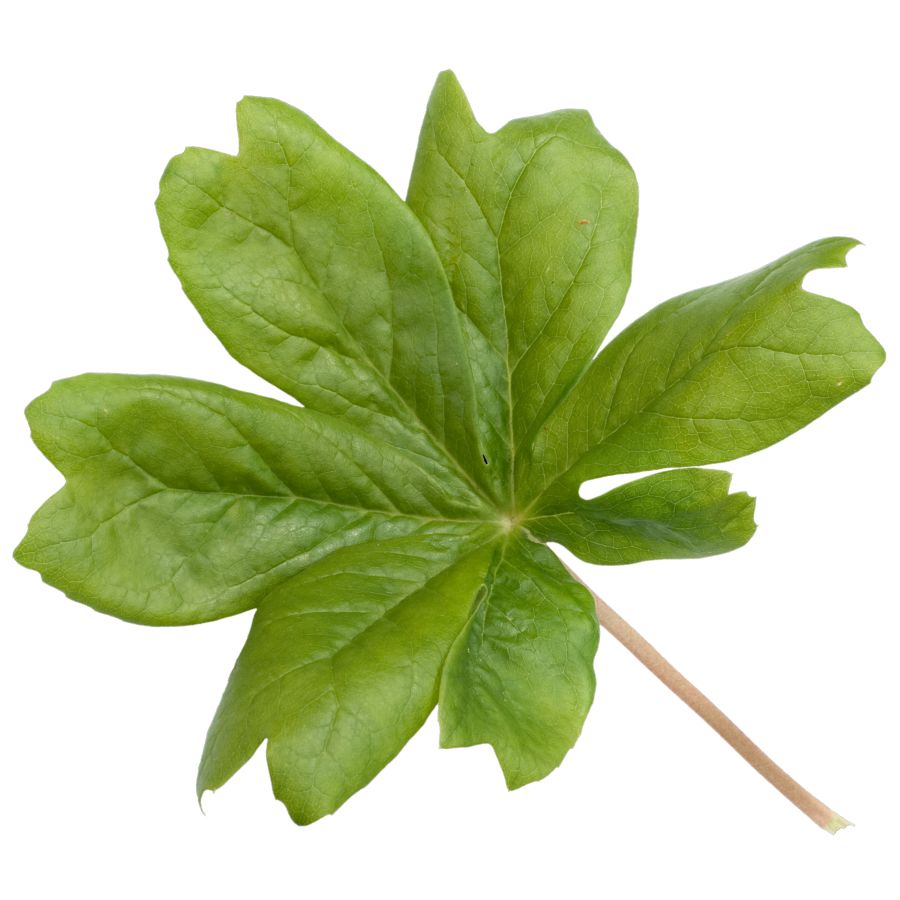
Often mistaken for: Wild grapes (Vitis spp.)
Mayapple is a low-growing plant found in shady forests and woodland clearings. It has large, umbrella-like leaves and produces a single pale fruit hidden beneath the foliage.
The unripe fruit resembles a small green grape, causing confusion with wild grapes, which grow in woody clusters on vines. All parts of the mayapple are toxic except the fully ripe, yellow fruit, which is only safe in small amounts. Eating unripe fruit or other parts can lead to nausea, vomiting, and severe dehydration.
Virginia Creeper (Parthenocissus quinquefolia)
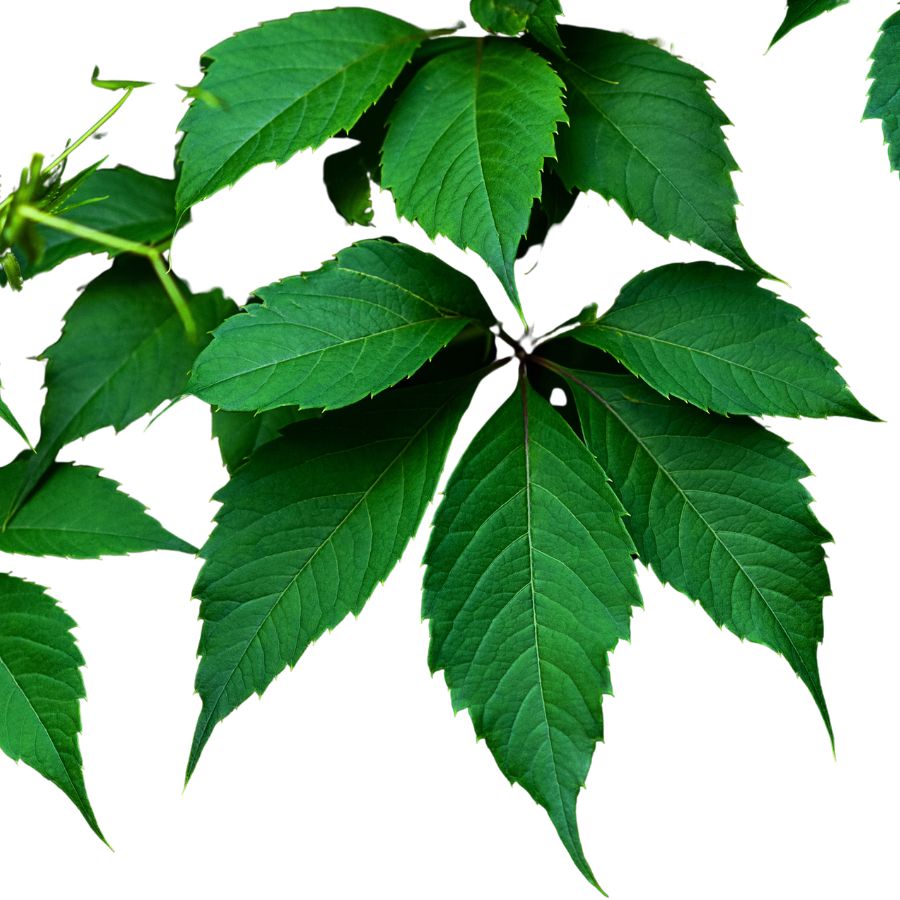
Often mistaken for: Wild grapes (Vitis spp.)
Virginia creeper is a fast-growing vine found on fences, trees, and forest edges. It has five leaflets per stem and produces small, bluish-purple berries from late summer to fall.
It’s often confused with wild grapes since both are climbing vines with similar berries, but grapevines have large, lobed single leaves and tighter fruit clusters. Virginia creeper’s berries are toxic to humans and contain oxalate crystals that can cause nausea, vomiting, and throat irritation.
Castor Bean (Ricinus communis)
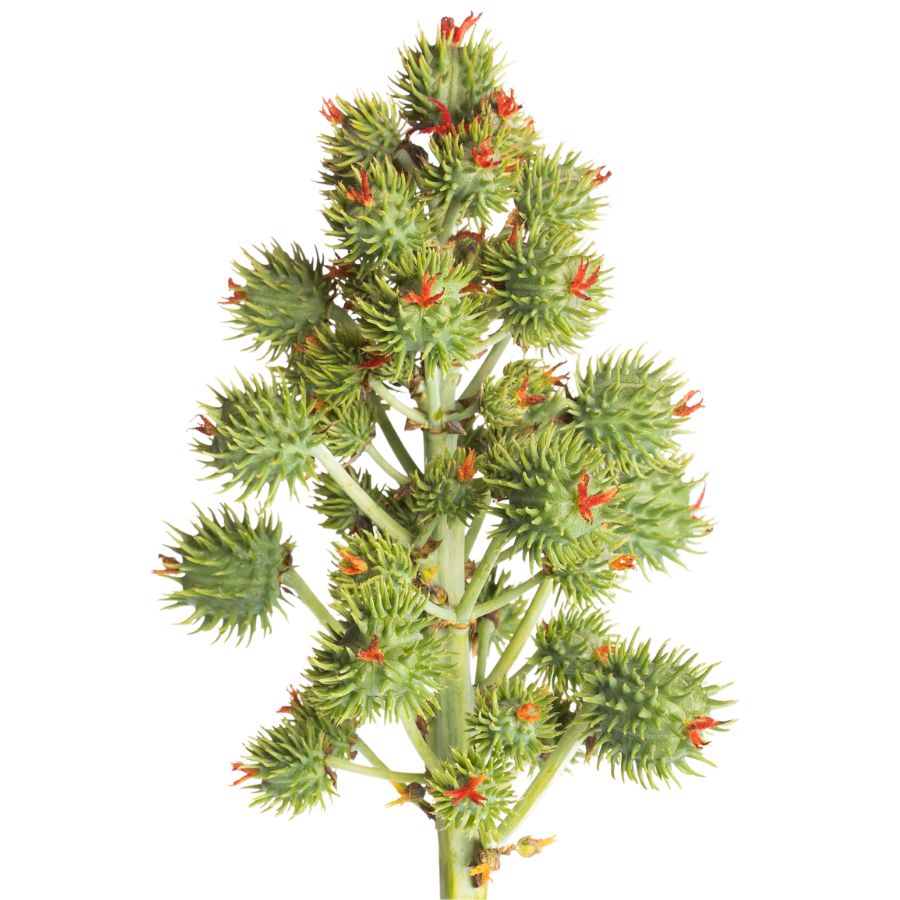
Often mistaken for: Wild rhubarb (Rumex spp. or Rheum spp.)
Castor bean is a bold plant with large, lobed leaves and tall red or green stalks, often found in gardens, along roadsides, and in disturbed areas in warmer regions in the US. Its red-tinged stems and overall size can resemble wild rhubarb to the untrained eye.
Unlike rhubarb, castor bean plants produce spiny seed pods containing glossy, mottled seeds that are extremely toxic. These seeds contain ricin, a deadly compound even in small amounts. While all parts of the plant are toxic, the seeds are especially dangerous and should never be handled or ingested.
A Quick Reminder
Before we get into the specifics about where and how to find these mushrooms, we want to be clear that before ingesting any wild mushroom, it should be identified with 100% certainty as edible by someone qualified and experienced in mushroom identification, such as a professional mycologist or an expert forager. Misidentification of mushrooms can lead to serious illness or death.
All mushrooms have the potential to cause severe adverse reactions in certain individuals, even death. If you are consuming mushrooms, it is crucial to cook them thoroughly and properly and only eat a small portion to test for personal tolerance. Some people may have allergies or sensitivities to specific mushrooms, even if they are considered safe for others.
The information provided in this article is for general informational and educational purposes only. Foraging for wild mushrooms involves inherent risks.
How to Get the Best Results Foraging
Safety should always come first when it comes to foraging. Whether you’re in a rural forest or a suburban greenbelt, knowing how to harvest wild foods properly is a key part of staying safe and respectful in the field.
Always Confirm Plant ID Before You Harvest Anything
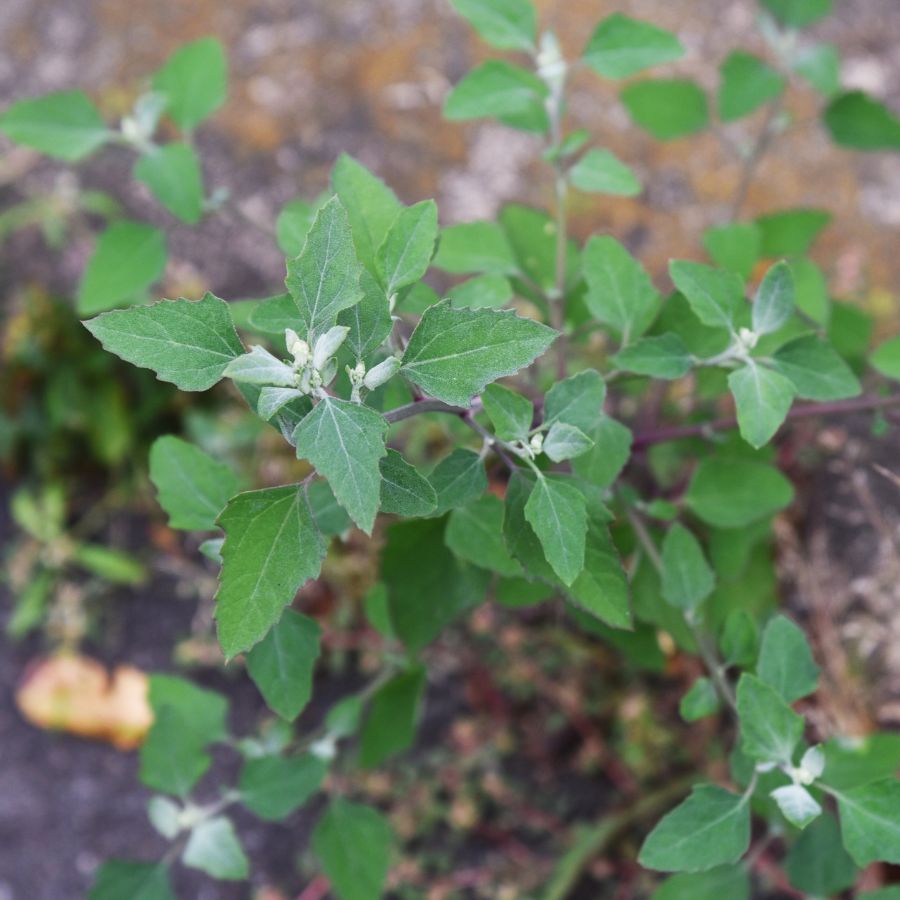
Knowing exactly what you’re picking is the most important part of safe foraging. Some edible plants have nearly identical toxic lookalikes, and a wrong guess can make you seriously sick.
Use more than one reliable source to confirm your ID, like field guides, apps, and trusted websites. Pay close attention to small details. Things like leaf shape, stem texture, and how the flowers or fruits are arranged all matter.
Not All Edible Plants Are Safe to Eat Whole
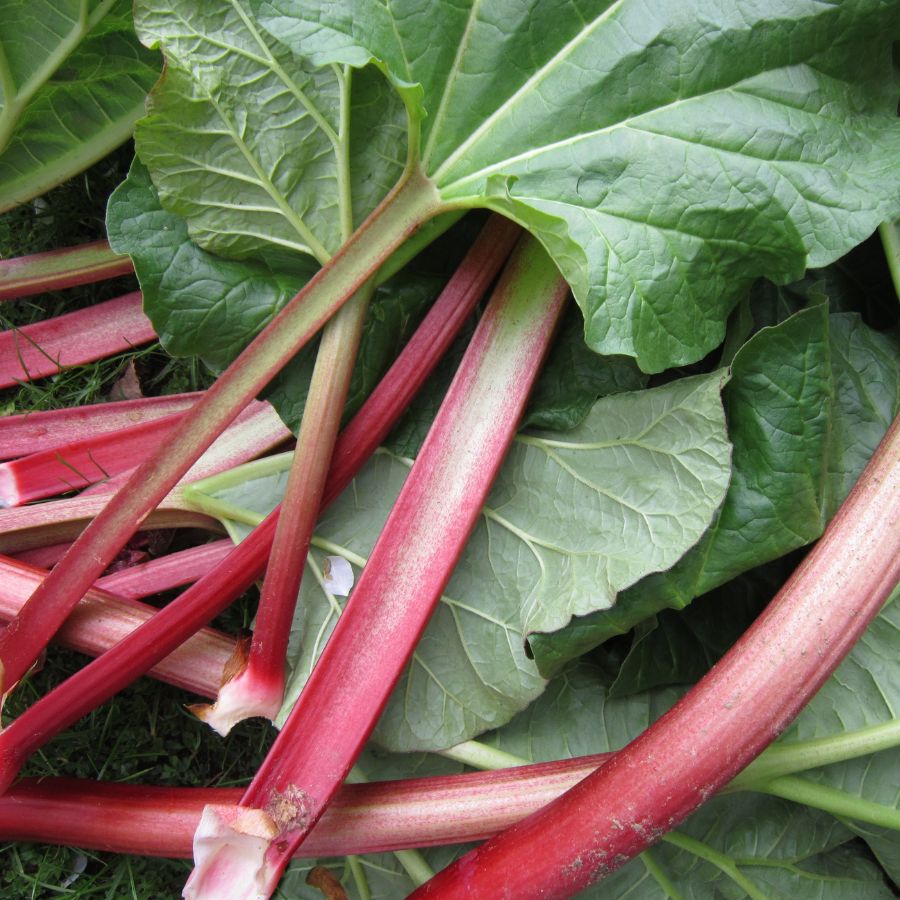
Just because a plant is edible doesn’t mean every part of it is safe. Some plants have leaves, stems, or seeds that can be toxic if eaten raw or prepared the wrong way.
For example, pokeweed is only safe when young and properly cooked, while elderberries need to be heated before eating. Rhubarb stems are fine, but the leaves are poisonous. Always look up which parts are edible and how they should be handled.
Avoid Foraging in Polluted or Contaminated Areas
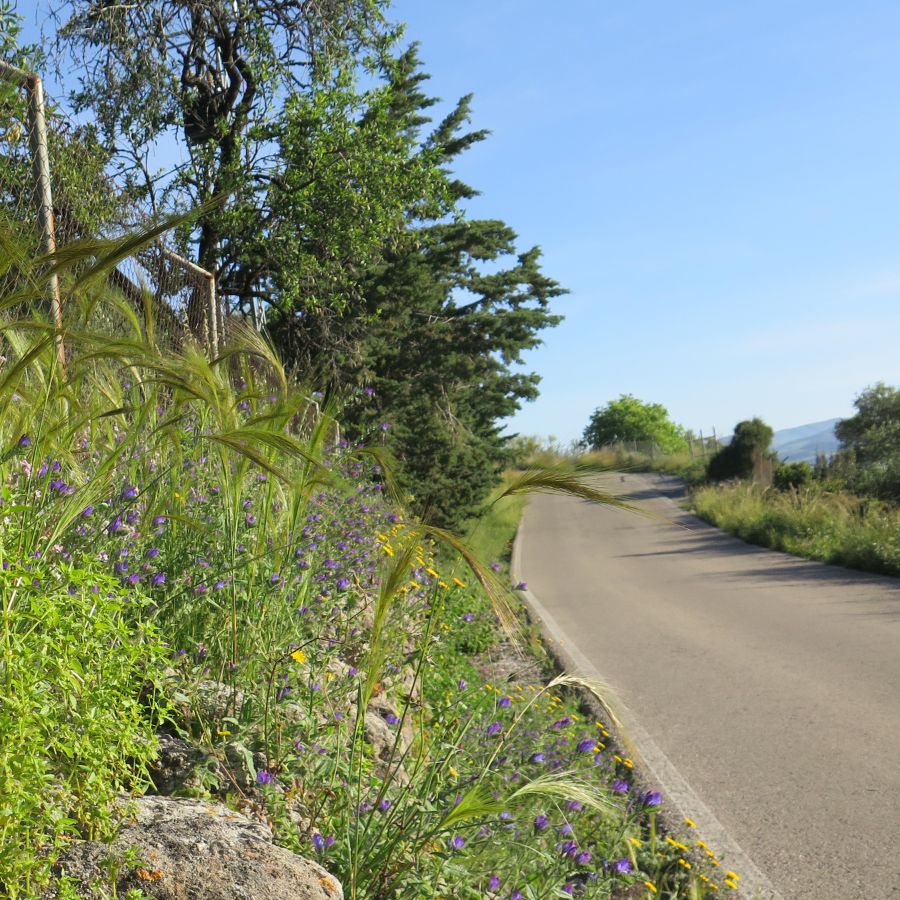
Where you forage matters just as much as what you pick. Plants growing near roads, buildings, or farmland might be coated in chemicals or growing in polluted soil.
Even safe plants can take in harmful substances from the air, water, or ground. Stick to clean, natural areas like forests, local parks that allow foraging, or your own yard when possible.
Don’t Harvest More Than What You Need
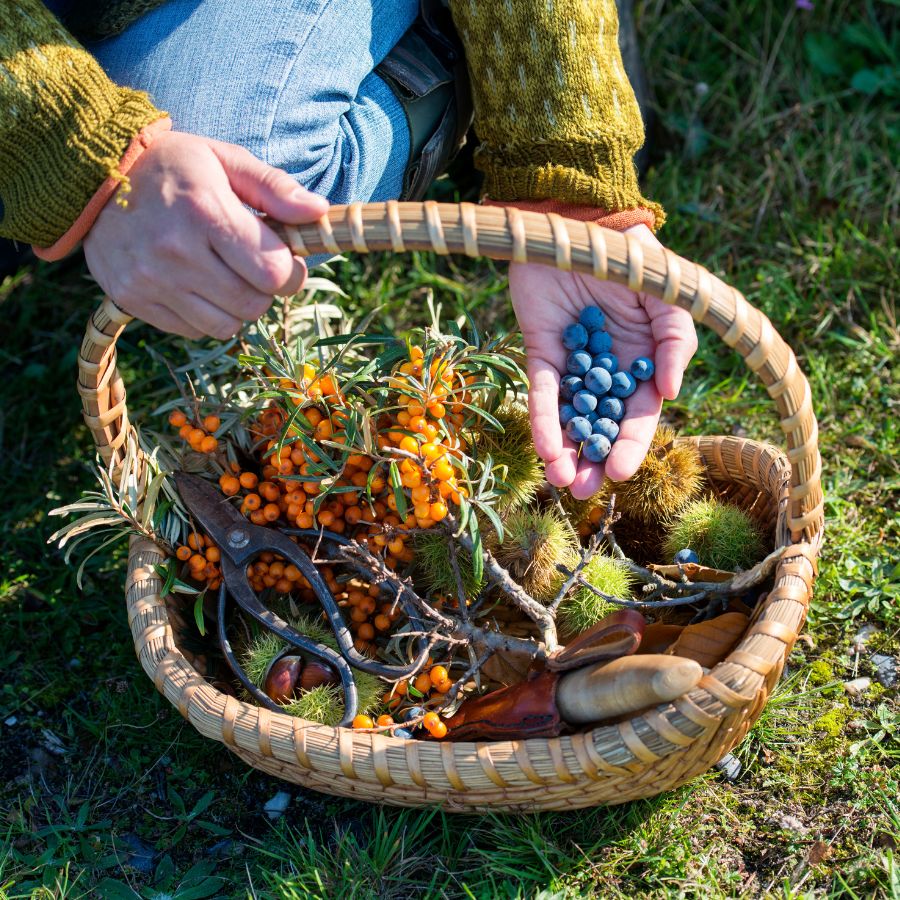
When you forage, take only what you plan to use. Overharvesting can hurt local plant populations and reduce future growth in that area.
Leaving plenty behind helps plants reproduce and supports wildlife that depends on them. It also ensures other foragers have a chance to enjoy the same resources.
Protect Yourself and Your Finds with Proper Foraging Gear

Having the right tools makes foraging easier and safer. Gloves protect your hands from irritants like stinging nettle, and a good knife or scissors lets you harvest cleanly without damaging the plant.
Use a basket or breathable bag to carry what you collect. Plastic bags hold too much moisture and can cause your greens to spoil before you get home.
This forager’s toolkit covers the essentials for any level of experience.
Watch for Allergic Reactions When Trying New Wild Foods

Even if a wild plant is safe to eat, your body might react to it in unexpected ways. It’s best to try a small amount first and wait to see how you feel.
Be extra careful with kids or anyone who has allergies. A plant that’s harmless for one person could cause a reaction in someone else.
Check Local Rules Before Foraging on Any Land
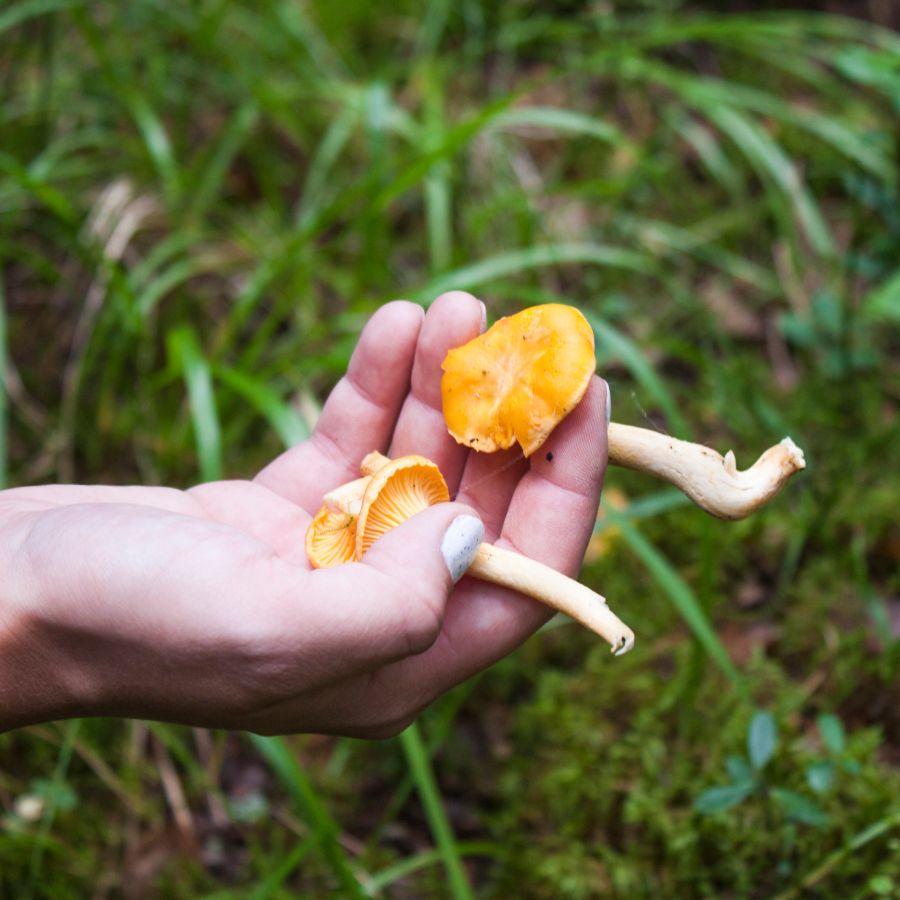
Before you start foraging, make sure you know the rules for the area you’re in. What’s allowed in one spot might be completely off-limits just a few miles away.
Some public lands permit limited foraging, while others, like national parks, usually don’t allow it at all. If you’re on private property, always get permission first.
Before you head out
Before embarking on any foraging activities, it is essential to understand and follow local laws and guidelines. Always confirm that you have permission to access any land and obtain permission from landowners if you are foraging on private property. Trespassing or foraging without permission is illegal and disrespectful.
For public lands, familiarize yourself with the foraging regulations, as some areas may restrict or prohibit the collection of mushrooms or other wild foods. These regulations and laws are frequently changing so always verify them before heading out to hunt. What we have listed below may be out of date and inaccurate as a result.
Where to Find Forageables in the State
There is a range of foraging spots where edible plants grow naturally and often in abundance:
| Plant | Locations |
| Blackberry (Rubus allegheniensis) | – Patapsco Valley State Park – Catoctin Mountain Park – Green Ridge State Forest |
| Elderberry (Sambucus canadensis) | – Chesapeake & Ohio Canal National Historical Park – Jug Bay Wetlands Sanctuary – Assateague Island National Seashore |
| American Persimmon (Diospyros virginiana) | – Patuxent Research Refuge – Susquehanna State Park – Gunpowder Falls State Park |
| Pawpaw (Asimina triloba) | – Seneca Creek State Park – Rock Creek Park – Monocacy National Battlefield |
| Wild Grape (Vitis riparia) | – Antietam National Battlefield – Savage River State Forest – Elk Neck State Park |
| Mayapple (Podophyllum peltatum) | – Rocks State Park – Swallow Falls State Park – Cunningham Falls State Park |
| Lamb’s Quarters (Chenopodium album) | – Eastern Neck National Wildlife Refuge – Blackwater National Wildlife Refuge – Tuckahoe State Park |
| Shepherd’s Purse (Capsella bursa-pastoris) | – Fort McHenry National Monument – Sandy Point State Park – Hart-Miller Island State Park |
| Curly Dock (Rumex crispus) | – Point Lookout State Park – Martinak State Park – Elk Neck State Forest |
| Milkweed (Asclepias syriaca) | – Greenbelt Park – Patapsco Valley State Park – Seneca Creek State Park |
| Jerusalem Artichoke (Helianthus tuberosus) | – Susquehanna State Park – Gunpowder Falls State Park – Patuxent River State Park |
| Cattail (Typha latifolia) | – Blackwater National Wildlife Refuge – Eastern Neck National Wildlife Refuge – Jug Bay Wetlands Sanctuary |
| Dandelion (Taraxacum officinale) | – Fort Washington Park – Greenbelt Park – Catoctin Mountain Park |
| Eastern Redbud (Cercis canadensis) | – Patuxent Research Refuge – Rock Creek Park – Seneca Creek State Park |
| Henbit (Lamium amplexicaule) | – Fort McHenry National Monument – Sandy Point State Park – Elk Neck State Park |
| Peppergrass (Lepidium virginicum) | – Assateague Island National Seashore – Point Lookout State Park – Martinak State Park |
| Wood Sorrel (Oxalis stricta) | – Green Ridge State Forest – Savage River State Forest – Cunningham Falls State Park |
| Chickweed (Stellaria media) | – Patapsco Valley State Park – Gunpowder Falls State Park – Seneca Creek State Park |
| Goldenrod (Solidago spp.) | – Blackwater National Wildlife Refuge – Eastern Neck National Wildlife Refuge – Jug Bay Wetlands Sanctuary |
| Wild Onion (Allium canadense) | – Fort Washington Park – Greenbelt Park – Catoctin Mountain Park |
| Wild Garlic (Allium vineale) | – Patuxent River State Park – Susquehanna State Park – Gunpowder Falls State Park |
| Groundnut (Apios americana) | – Assateague Island National Seashore – Point Lookout State Park – Martinak State Park |
| Smartweed (Persicaria sagittata) | – Blackwater National Wildlife Refuge – Eastern Neck National Wildlife Refuge – Jug Bay Wetlands Sanctuary |
| Mulberry (Morus rubra) | – Patapsco Valley State Park – Catoctin Mountain Park – Green Ridge State Forest |
| Spicebush (Lindera benzoin) | – Rocks State Park – Swallow Falls State Park – Cunningham Falls State Park |
| Greenbrier (Smilax rotundifolia) | – Fort McHenry National Monument – Sandy Point State Park – Hart-Miller Island State Park |
| Nannyberry (Viburnum lentago) | – Eastern Neck National Wildlife Refuge – Blackwater National Wildlife Refuge – Tuckahoe State Park |
| Serviceberry (Amelanchier canadensis) | – Patuxent Research Refuge – Rock Creek Park – Seneca Creek State Park |
| Hickory (Carya spp.) | – Greenbelt Park – Patapsco Valley State Park – Catoctin Mountain Park |
| Black Walnut (Juglans nigra) | – Susquehanna State Park – Gunpowder Falls State Park – Patuxent River State Park |
| Beech (Fagus grandifolia) | – Assateague Island National Seashore – Point Lookout State Park – Martinak State Park |
| Hazelnut (Corylus americana) | – Blackwater National Wildlife Refuge – Eastern Neck National Wildlife Refuge – Jug Bay Wetlands Sanctuary |
| Wild Strawberry (Fragaria virginiana) | – Fort Washington Park – Greenbelt Park – Catoctin Mountain Park |
| Blueberry (Vaccinium angustifolium) | – Patuxent Research Refuge – Rock Creek Park – Seneca Creek State Park |
| Sassafras (Sassafras albidum) | – Greenbelt Park – Patapsco Valley State Park – Catoctin Mountain Park |
| Mountain Mint (Pycnanthemum virginianum) | – Susquehanna State Park – Gunpowder Falls State Park – Patuxent River State Park |
| New Jersey Tea (Ceanothus americanus) | – Assateague Island National Seashore – Point Lookout State Park – Martinak State Park |
| Yarrow (Achillea millefolium) | – Blackwater National Wildlife Refuge – Eastern Neck National Wildlife Refuge – Jug Bay Wetlands Sanctuary |
Peak Foraging Seasons
Different edible plants grow at different times of year, depending on the season and weather. Timing your search makes all the difference.
Spring
Spring brings a fresh wave of wild edible plants as the ground thaws and new growth begins:
| Plant | Months | Best Weather Conditions |
| Mayapple (Podophyllum peltatum) | April–May | Moist woodland understory after spring rains |
| Eastern Redbud (Cercis canadensis) | March–April | Mild, sunny days with occasional showers |
| Shepherd’s Purse (Capsella bursa-pastoris) | March–May | Cool, damp ground after light rainfall |
| Curly Dock (Rumex crispus) | March–May | Moist soil, preferably just after rain |
| Henbit (Lamium amplexicaule) | March–April | Cool temperatures with patchy sun |
| Dandelion (Taraxacum officinale) | March–May | Sunny days following wet conditions |
| Chickweed (Stellaria media) | March–May | Cool, shaded areas with recent moisture |
| Wild Onion (Allium canadense) | March–May | Moist, open fields with mild temperatures |
| Wild Garlic (Allium vineale) | March–May | Damp grasslands and meadows after rain |
| Wood Sorrel (Oxalis stricta) | April–June | Partly sunny forest edges after showers |
| Serviceberry (Amelanchier canadensis) | April–May | Sunny or lightly shaded areas, well-drained soil |
| Spicebush (Lindera benzoin) | April–May | Damp woodland areas with filtered light |
| Sassafras (Sassafras albidum) | March–May | Sunny to partial shade in dry to moist soil |
| Groundnut (Apios americana) | April–May | Moist, rich soils along streambanks |
| Smartweed (Persicaria sagittata) | April–June | Warm, wet areas with partial sun |
| Yarrow (Achillea millefolium) | April–June | Open meadows after light rains |
Summer
Summer is a peak season for foraging, with fruits, flowers, and greens growing in full force:
| Plant | Months | Best Weather Conditions |
| Blackberry (Rubus allegheniensis) | June–August | Warm days, full sun after early summer rain |
| Elderberry (Sambucus canadensis) | July–August | Hot, humid days near water sources |
| Wild Grape (Vitis riparia) | July–September | Hot, sunny weather in open areas |
| Lamb’s Quarters (Chenopodium album) | June–August | Dry, sunny locations with disturbed soil |
| Milkweed (Asclepias syriaca) | June–August | Warm and sunny with well-drained soil |
| Cattail (Typha latifolia) | June–August | Hot days in marshy, shallow water environments |
| Peppergrass (Lepidium virginicum) | June–August | Dry, disturbed ground with full sun |
| Mulberry (Morus rubra) | June–July | Hot weather in wooded edges or fields |
| Greenbrier (Smilax rotundifolia) | May–July | Warm, partly shaded areas with good soil moisture |
| Nannyberry (Viburnum lentago) | June–July | Sunny or partly shaded areas with steady rainfall |
| Wild Strawberry (Fragaria virginiana) | May–June | Morning sun and moderate temperatures |
| Blueberry (Vaccinium angustifolium) | June–July | Sunny hillsides and acidic, well-drained soil |
| Mountain Mint (Pycnanthemum virginianum) | July–August | Warm days in dry, sunny meadows |
| New Jersey Tea (Ceanothus americanus) | June–August | Dry, rocky hillsides with full sun |
Fall
As temperatures drop, many edible plants shift underground or produce their last harvests:
| Plant | Months | Best Weather Conditions |
| American Persimmon (Diospyros virginiana) | September–November | Cool nights and sunny days post-frost |
| Pawpaw (Asimina triloba) | September–October | Cool mornings and moist, shady lowlands |
| Hickory (Carya spp.) | September–October | Crisp autumn air and dry forest floors |
| Black Walnut (Juglans nigra) | September–October | Breezy, dry days for fallen nuts collection |
| Beech (Fagus grandifolia) | October–November | Cool, dry woodland conditions |
| Hazelnut (Corylus americana) | September | Early fall mornings with dry conditions |
| Jerusalem Artichoke (Helianthus tuberosus) | October–November | After first frost in sunny, open spaces |
| Goldenrod (Solidago spp.) | August–October | Late summer heat through early fall chill |
Winter
Winter foraging is limited but still possible, with hardy plants and preserved growth holding on through the cold:
| Plant | Months | Best Weather Conditions |
| Shepherd’s Purse (Capsella bursa-pastoris) | December–February | Mild winter spells and thawed ground |
| Curly Dock (Rumex crispus) | December–February | Unfrozen soil and sunny winter afternoons |
| Chickweed (Stellaria media) | December–February | Cool, moist areas during mild winter days |
| Henbit (Lamium amplexicaule) | December–February | Moist soil during brief warm winter spells |
| Wild Onion (Allium canadense) | January–February | Warmer microclimates with thawed soil |
| Wild Garlic (Allium vineale) | January–February | Open ground warmed by winter sun |
| Dandelion (Taraxacum officinale) | December–February | Sunny spots during unseasonably warm days |
| Wood Sorrel (Oxalis stricta) | January–February | Sheltered woodland edges after light rain |
One Final Disclaimer
The information provided in this article is for general informational and educational purposes only. Foraging for wild plants and mushrooms involves inherent risks. Some wild plants and mushrooms are toxic and can be easily mistaken for edible varieties.
Before ingesting anything, it should be identified with 100% certainty as edible by someone qualified and experienced in mushroom and plant identification, such as a professional mycologist or an expert forager. Misidentification can lead to serious illness or death.
All mushrooms and plants have the potential to cause severe adverse reactions in certain individuals, even death. If you are consuming foraged items, it is crucial to cook them thoroughly and properly and only eat a small portion to test for personal tolerance. Some people may have allergies or sensitivities to specific mushrooms and plants, even if they are considered safe for others.
Foraged items should always be fully cooked with proper instructions to ensure they are safe to eat. Many wild mushrooms and plants contain toxins and compounds that can be harmful if ingested.

